- WV App Login
- Site Search
- Report Templates
- Speech Helpers
- SLP Resources
- Top 10 Tips
- Getting an Eval
- Certified SLP
- How to Say the R Sound
- 0-18 Months
- 18-36 Months
- 18-30 Months
- 30-36 Months
- 10-11 Years
- Articulation
- Cleft Palate
- Phonological
- Dysphagia Causes
- Dysphagia Treatment

30 Problem Solving Scenarios for Speech Therapy Practice
As promised here are the words for your unlimited use .
If you know others who can use our lists ...
... please share this page using our site share buttons.
Explore Our Goal Achieving, Client Centered Products
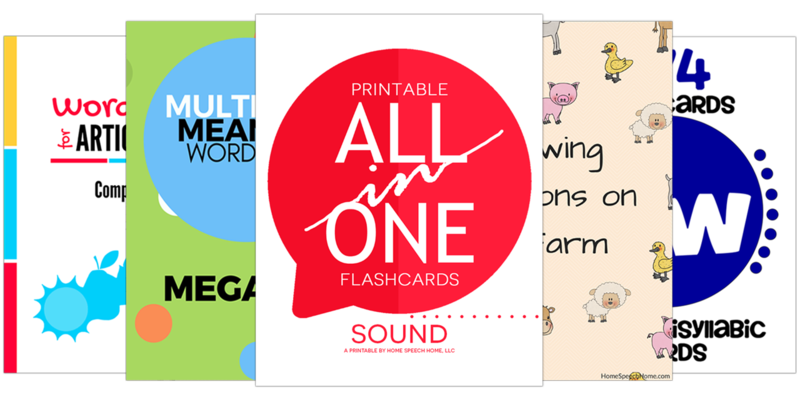
SEE ALSO: Houston We Have a Problem! Activities for Problem Solving
Problem solving scenarios.
- Your friends came over to your house for a movie night. One of your friends brought another friend so there are more people than you planned for. You want to pass out the drinks but you only have five cans of soda and you need 6 for everyone to have one. What could you do?
- After basketball practice you go back to the locker room with your team to shower and change. When you are done dressing, you can't find your shoes. What could you do?
- You have been waiting all day for lunch to come because you are starving. Finally class gets over and you get to go to lunch. Except when you go to get to your lunch, it's not there. You probably left it at home. What could you do?
- There is a guy in your class who is always mean to you. He always bumps you when he walks by and he calls you names. He knocks stuff out of your hands and makes you feel stupid. You don't think you can take it anymore. What could you do?
- You really want to invite this new girl/guy to come to your birthday party, but you have never talked to them before. You are worried they will say no. What could you do?
- You rode the bus to school today and on the way in people are pointing and laughing at you. You go in the bathroom and see that you have pink gum all over the back of your pants. What could you do?
- You wake up and see that your alarm never went off. So you are starting your morning 15 minutes later than you planned. It is a really important day at school and you cannot be late. What could you do?
- You are giving a group presentation in front of class and it's your turn to talk. All of the sudden you sneeze. You cover it with your hand, but now your hand is full of stuff you sneezed out. What could you do?
- You are eating dinner at a fancy restaurant with your parents and their friends. You have a really messy dinner and accidentally flip a noodle into the lady's lap. They are busy talking and don't notice it. What could you do?
- You are taking a test and there is no talking allowed. You are writing your answers on the paper and your pencil breaks. What could you do?
- You are taking a test and the guy behind you asks you for help. He wants to know what you put for question number two. What could you do?
- You are at a birthday party and you have waited in line for a long time for your turn to hit the pinata. It is finally going to be your turn and it looks like the next hit will break the pinata. But you suddenly have to go to the bathroom. What could you do?
- You are hanging outside with your friend and she decides to pick your neighbor's flowers. She gives you the pretty handful of flowers and right then your neighbor opens the door. She asks you why you picked her flowers. What could you do?
- You borrowed your sister's skates one day without asking and they broke while you were using them. What could you do?
- You are eating at a friend's house and the mom piles your plate full of food. It looks really good and you want to eat it all but you can't because you just ate a snack. What could you do so you don't hurt her feelings?
SEE ALSO: The Best Free App for Speech Therapy

- Your teacher was working at her desk. You wanted to ask her a question, but she didn't see your hand raised. What should you do?
- You started to do your work, but you weren't sure if you were doing it right. What should you do?
- You were playing tether-ball and were the champion so far. In the next game, you slightly touched the rope. Only one student saw you touch the rope. What will you do?
- The teacher is giving directions, but your friend sitting next to you keeps talking. You can't hear the directions. What should you do?
- You didn't do your homework. Your teacher was upset with you. What should you do?
- You finished eating and felt a burp coming. What are you going to do?
- You were waiting to swing. When it was your turn, another boy jumped in front of you and took the swing. What would you do?
- You waited a long time, but your mom didn't come to pick you up after school. What should you do?
- A bully threatened to beat you up after school. What should you do?
- A boy on the playground keeps pushing you and making you mad. What would you do?
- You were sitting in class doing your work and you hear the fire alarm. What should you do?
- An adult you didn't know came on to the playground and asked if you would help look for his lost dog. What would you do?
- You forgot your lunch at home. What would you do?
- The person sitting behind you keeps tapping your chair with his foot. What should you do?
- You finished your work early. What should you do?
This list of functional words was professionally selected to be the most useful for a child or adult who has difficulty with problem solving scenarios.
We encourage you to use this list when practicing at home.
Home practice will make progress toward meeting individual language goals much faster.
Speech-Language Pathologists (SLPs) are only able to see students/clients 30-60 mins (or less) per week. This is not enough time or practice for someone to handle Problem solving scenarios.
Every day that your loved one goes without practice it becomes more difficult to help them.
SEE ALSO: The Best Books for Speech Therapy Practice
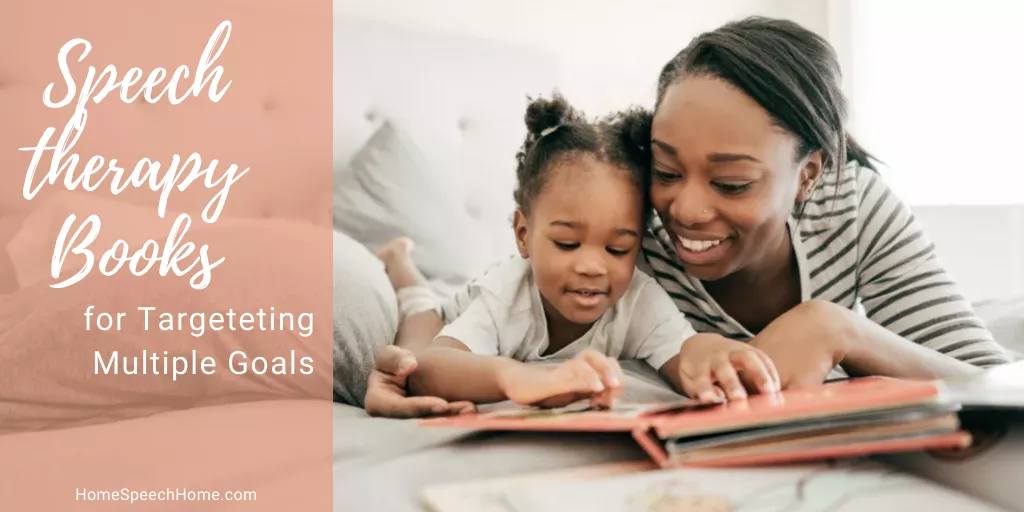
We know life is busy , but if you're reading this you're probably someone who cares about helping their loved one as much as you can.
Practice 5-10 minutes whenever you can, but try to do it on a consistent basis (daily).
Please, please, please use this list to practice.
It will be a great benefit to you and your loved one's progress.
Activities and Product Discounts, Oh My! Sign up for Terrific Therapy Emails
See Past Email Examples
Your information is 100% private & never shared .

Hi! We're Luke and Hollie.
We are both MS CCC-SLPs and fell in love while studying for our degrees. Since then we have done everything together - graduated, worked, and started a family. We spend most of our time with our family and the rest making this site for you.

Top Free Resources

Word Vault Essential
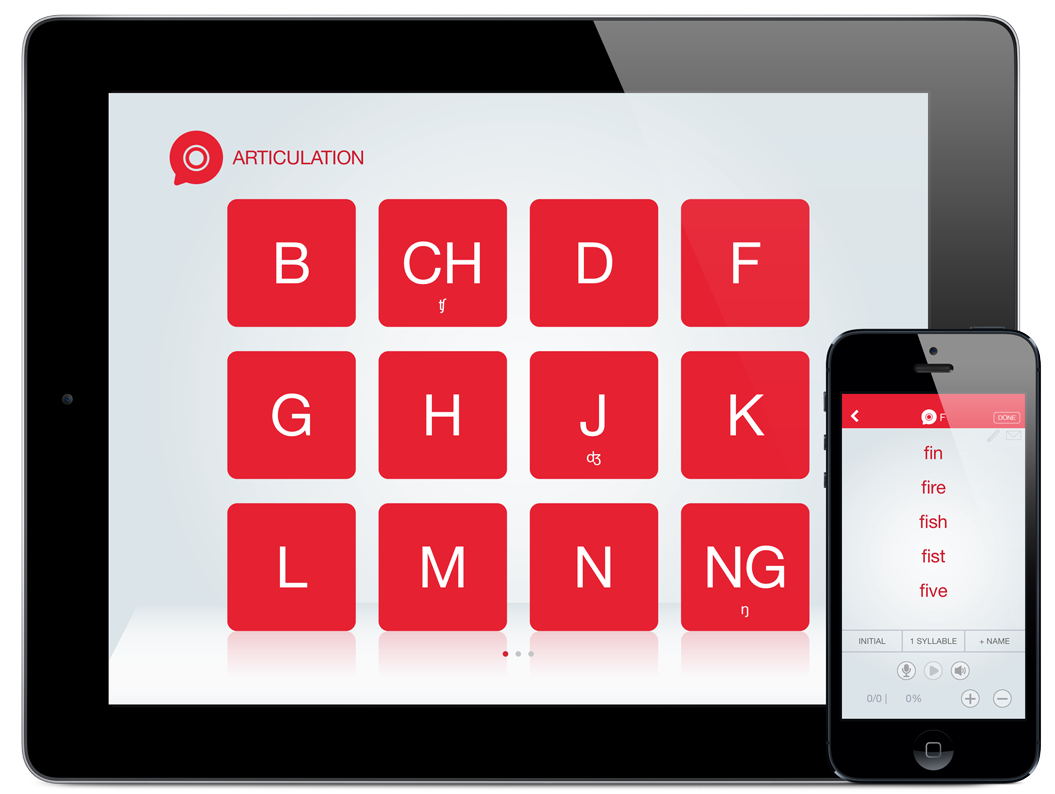
# 1 Chronological Age Calculator

Popular Materials
All in one printable flashcards.
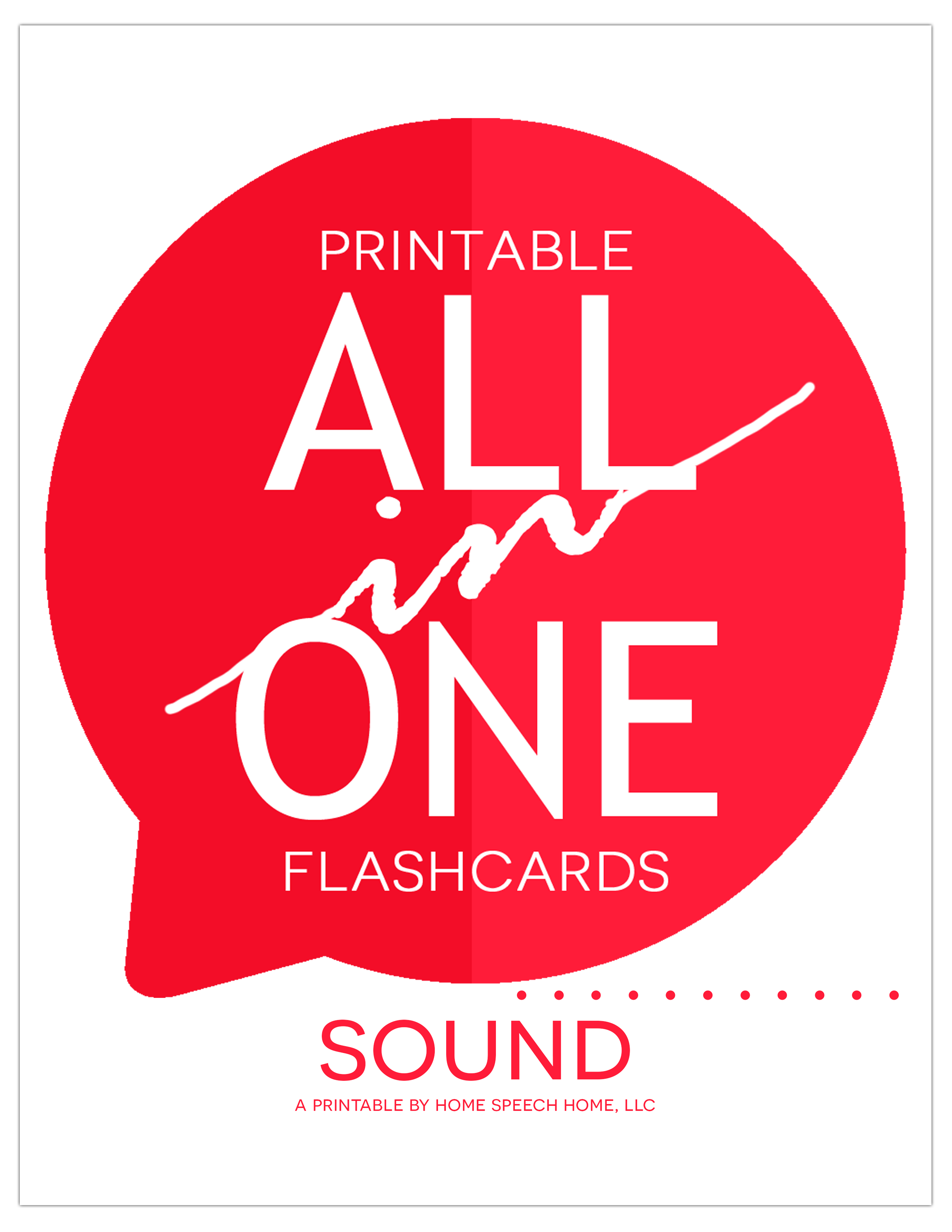
Multiple Meaning Word Mega Pack
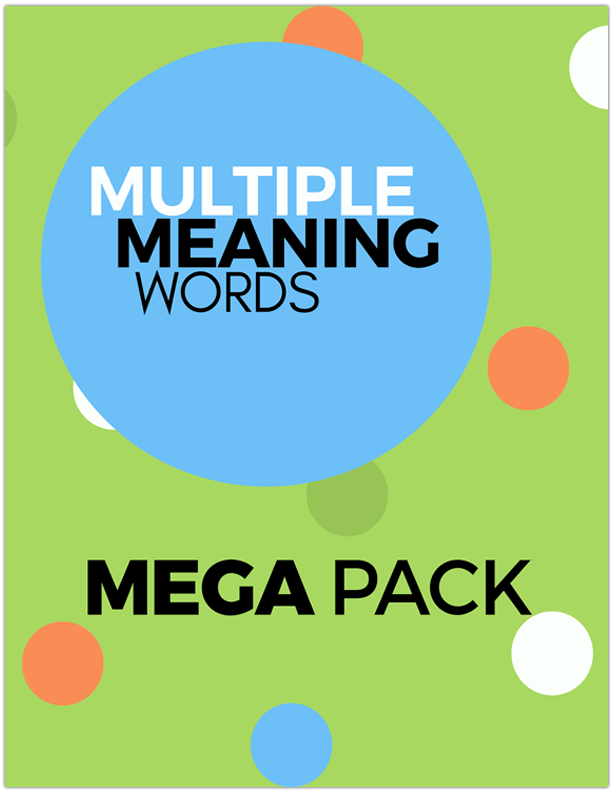
Complete Articulation Word Search
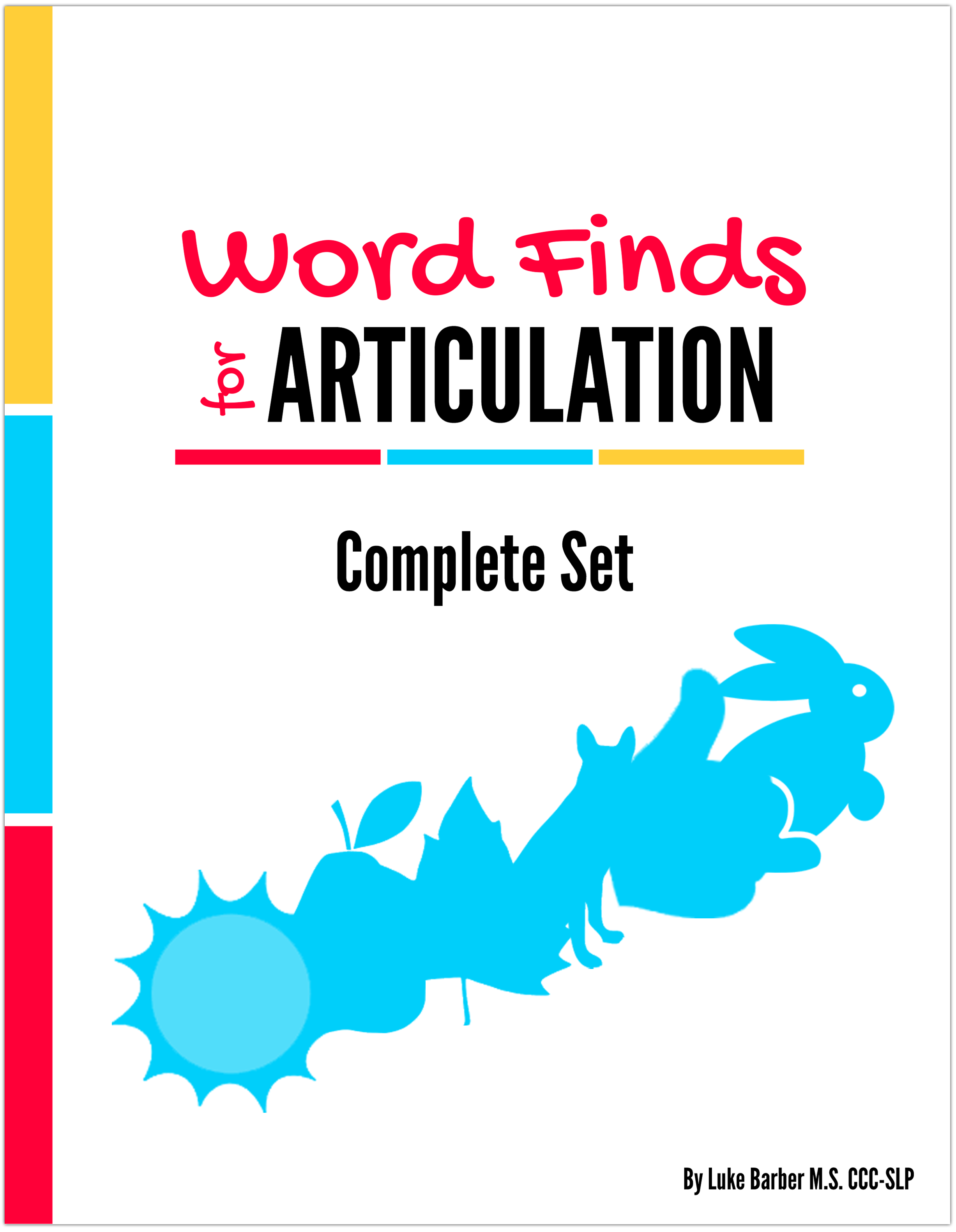
New! 111 Articulation Stories
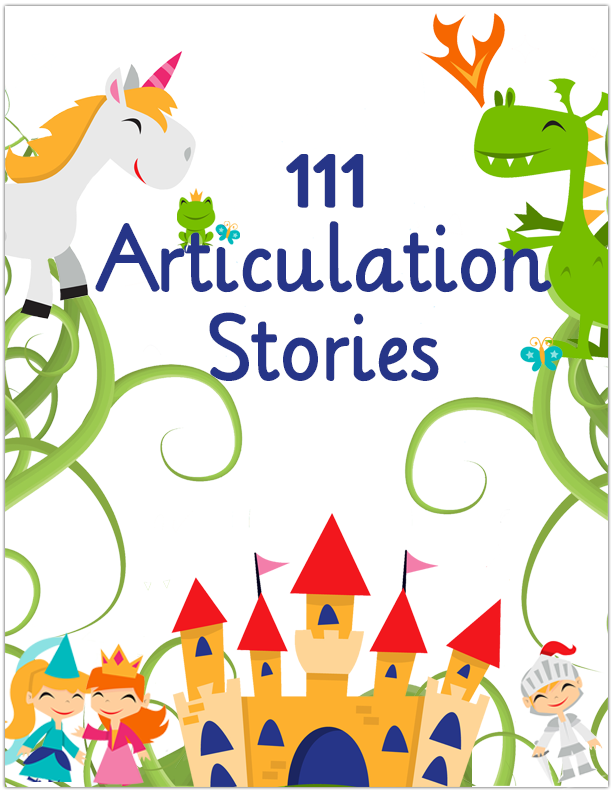
Teaching the Sound Books
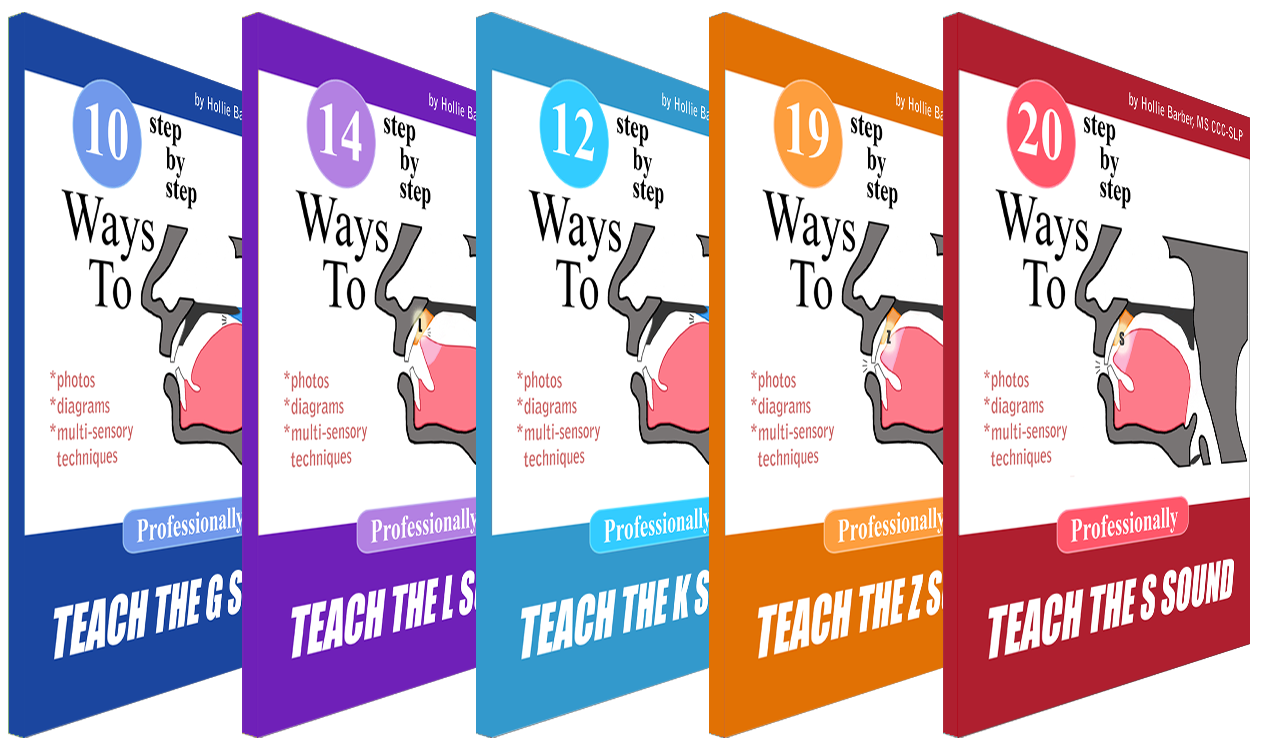
Multi-Syllabic Words Flashcards
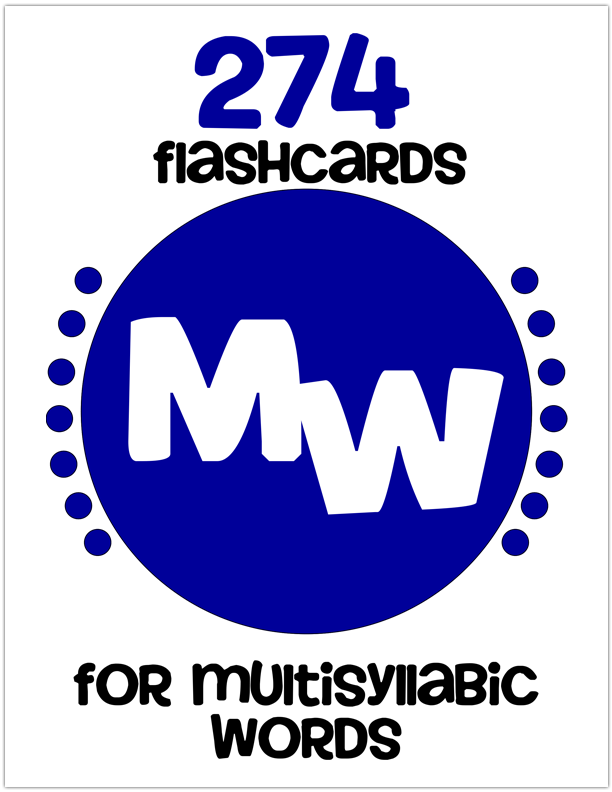
Apps to Save You Time & Help Your Clients
Articulation therapy + pirate adventures = awesomeness.

This App Will Get Your Kids Talking

Image Credits
Copyright © 2010 –
HomeSpeechHome.com | All Rights Reserved
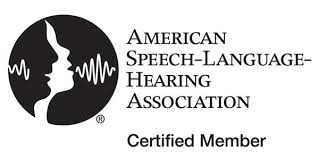
This website contains affiliate links, meaning if you buy something from them we may make some money (at no cost to you). By using our affiliate links, you are helping to support our site which is a U.S.-based, family-run small business :)
- Prodigy Math
- Prodigy English
- Is a Premium Membership Worth It?
- Promote a Growth Mindset
- Help Your Child Who's Struggling with Math
- Parent's Guide to Prodigy
- Back to School
- Assessments
- Math Curriculum Coverage
- English Curriculum Coverage
- Teacher Resource Center
- Administrators
- Game Portal
- Case Studies
45 Fun and Clever Brain Teasers for Kids with Answers!
Written by Laney Kennedy
- Game Based Learning

- What brain teasers are
- The benefits of brain teasers for kids
- Math brain teasers for kids
Sometimes keeping your students engaged during a (long) school day feels like a losing battle. How do you gain their full attention while teaching the skills they need to succeed? How do you turn tough and intimidating concepts into fun, entertaining lessons that actually spark life in the classroom?
Brain teasers for kids are a great form of game-based learning that not only entertain children but also inspire some creative thought in the classroom. People of all ages can indulge in these playful — yet challenging — activities.
And some examples of when teachers might want to use brain teasers are on a bulletin board in the classroom, as a partnered activity to start a new concept or lesson, or during a rainy day indoor recess box.
We’ve gathered 45 examples of brain teasers for kids with answers, organized by category:
Table of Contents
Language brain teasers for kids :
Riddles ; Language associations ; Lateral thinking problems.
Math brain teasers for kids :
Math riddles ; Pattern problems ; Prodigy.
Visual brain teasers for kids :
Spot the difference ; Rebus puzzles ; Optical illusions ; Stroop effect test.
Use the list below to find the perfect brain teaser for your class!
What are brain teasers?
Before you explore our examples, you might be wondering what brain teasers actually are.
Cambridge Dictionary defines a brain teaser as “a problem for which it is hard to find the answer, especially one which people enjoy trying to solve as a game.”
Brain teasers are a type of puzzle — and as the list below reveals, they come in many different forms. Often presented as a riddle, question or activity, brain teasers require a little extra brainpower to solve.
It's important to note that if you have any English language learners in your class, brain teasers for kids might pose a challenge for them. If that's the case, they might need you to walk them through the brain teaser more closely, or you can find ones that better suit their language level.
Brain teasers for kids differ from other complex or abstract problems because they’re usually done for fun. Although you can use them to analyze problem-solving and critical thinking skills, they’re often used as an amusing activity to encourage logical and lateral thinking , or thinking “outside the box.”
45 Brain teasers for kids
We’ve compiled a list of language, math and visual brain teasers to get your students thinking. Get inspired by the examples below — including answers!
Language brain teasers for kids
When you hear the term “brain teaser,” a riddle is likely the first thing that comes to mind. Riddles are perplexing — sometimes misleading — questions or statements that require creative thought to solve.
Riddles are usually fun, and plenty of them can add some humour to your classroom.
Enjoy our list of riddles for kids below!
a) Billy’s mother had five children. The first was named Lala, the second was named Lele, the third was named Lili, the fourth was named Lolo. What was the fifth child named?
b) Choose the correct sentence: “The yolk of the egg is white” or “the yolk of the egg is white.”
c) It’s as light as a feather, but the strongest person can’t hold it for more than five minutes. What is it?
d) The more there is, the less you see. What is it?
e) What gets more wet while it dries?
f) You can find it in Mercury, Earth, Mars, Jupiter and Saturn, but not in Venus or Neptune. What is it?
g) It likes food, but water kills it. What is it?
h) What’s full of holes but can still hold water?
i) Which is heavier, a pound of feathers or a pound of rocks?
j) How far can a dog run into the woods?
k) You’re driving a city bus. At the first stop, three women get on. At the second stop, one woman gets off and a man gets on. At the third stop, two children get on. The bus is blue and it’s raining outside in December. What colour is the bus driver’s hair?
l) There are three houses. One is red, one is blue and one is white. If the red house is to the left of the house in the middle, and the blue house is to the right of the house in the middle, where’s the white house?
m) It’s at the center of gravity and you can find it in Venus, but not Mars. What is it?
n) What goes on four feet in the morning, two in the afternoon and three in the evening? (This is from the classic myth, Oedipus and the Riddle of the Sphinx )
o) What travels faster: heat or cold?
p) A man was walking in the rain in the middle of nowhere without a coat or an umbrella. He got soaked, but not a single hair on his head was wet. How can this be?
q) A cowboy rode into town on Friday. He stayed in town for three days and rode back out on Friday. How is this possible?
b) Neither. Egg yolks are yellow, not white!
f) The letter “R”
h) A sponge
i) Neither. Both weigh a pound!
j) Halfway. Once it reaches halfway, it’s running out of the woods.
k) Whatever colour your hair is. Remember, you’re driving the bus!
l) In Washington, D.C.
m) The letter “V”
n) A human. The times of day represent stages of human life. At the beginning of life, a baby crawls on four “feet.” As a person gets older, they walk on two feet. Later in life, a person will walk on three “feet” (two feet, plus a cane to help them walk).
o) Heat travels faster because you can catch a cold!
p) He was bald.
q) The horse’s name was Friday.
As a bonus, use these riddles to challenge preconceived notions and get students thinking about natural bias .
a) Two boxers are in a match scheduled for 12 rounds. (Pure boxing only - no kicking, UFC takedowns, or anything else). One of the boxers gets knocked out after only six rounds, yet no man throws a punch. How is this possible?
b) A father and son have a car accident and both are very injured. They are taken to separate hospitals for treatment. When the boy is taken in for an operation, the surgeon says, “I can’t do this surgery…. this boy is my son!” How is this possible?
a) The two boxers are women.
b) The surgeon is the boy’s mother.
2. Language associations
These brain teasers for kids explore the complexities of the English language. Use them to boost student knowledge of sounds, words, spelling, categorization and more.a) Word association : find a word that associates with the following sets of words.
- Cake, swiss, cottage
- Glasses, screen, day
- Cream, cube, cap
- Knife, fly, cup
b) Find the mystery word . Replace the third letter of each word with a new letter to create a different word. When read vertically, the new letters will reveal the mystery word.
For example, the word MA K E could become MA R E, MA L E, MA T E and so on. It’s your job to figure out which one works to create the mystery word.
Hint: It’s something you’ll find outside.
c) Find rhyming pairs . Unscramble the words below so that each pair of words rhymes.
- RBAE & HREAS
- WNROED & UTRHNDE
- TUGHAT & HBTUGO
- ODULC & ODOG
Mystery word: FLOWER
- BEAR (or BARE) & SHARE
- WONDER & THUNDER
- TAUGHT & BOUGHT
- COULD & GOOD
You can also use printable brain teasers for kids like this one:
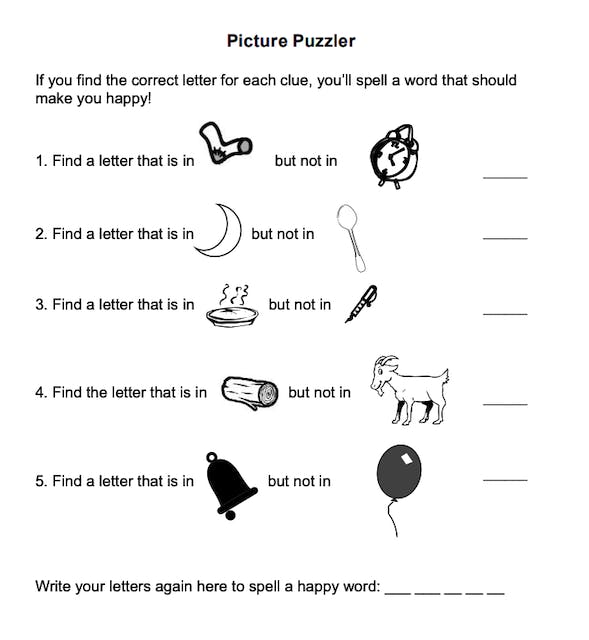
Image source: Spelling Words Well
Answer: The “happy word” is SMILE.
Make learning fun, adaptive and insightful
There's no cost to you or your students and Prodigy is fully aligned with state standards for grades 1-8 math.
3. Lateral thinking problems
Lateral thinking problems require creative thinking with an indirect approach.
These questions require logic and careful thought to solve. The most notable example of a lateral thinking problem is the classic Monty Hall problem .
Here are two examples of lateral thinking problems kids can try to solve.
a) The river crossing problem

Image source: Popular Mechanics
A farmer is travelling with a fox, a goose, and a bag of beans. During his journey, he comes across a river with a boat to cross it.
The farmer can only fit one thing in the boat with him at a time. If left alone together, the fox will eat the goose or the goose will eat the beans. How does the farmer get everything across the river safely?
b) The light bulb problem

There are three light switches outside of a room-- labeled number one, number two, and number three. The door to the room is closed and you can’t see in. All three switches are off.
You need to figure out which switch belongs to which bulb. You can use the switches however you want to, but can only enter the room once. How do you do it?
a) Here’s the step-by-step solution:
- The farmer brings the goose across the river first (if he leaves the goose alone, it will either eat the beans or be eaten by the fox).
- The farmer brings either the fox or the beans across and leaves the other one alone.
- Now the farmer has two items on the other side of the river, including the goose. If he leaves the goose again, the same problem will occur. So, the farmer must bring the goose back to the other side.
- The farmer brings the other item back (either the fox or the beans) and leaves the goose alone again. The fox and the beans are now on the other side of the river.
- The farmer returns and brings the goose across the river again.
b) Turn on the first switch and leave it on. Turn on the second switch for a few minutes, and then turn it off again. When you enter the room, one light bulb will be on. You’ll know it goes with switch one because you turned it on. Another bulb will be hot. You’ll know that goes with switch two because it was on for a little while. The bulb that’s off and cold goes with switch three because you didn’t touch it.
Like math puzzles , these brain teasers for kids can increase engagement with math content and inspire your students to work on math concepts and problems outside of regular lessons.
1. Math riddles
These riddles are just as amusing as the ones above, but they’re math-focused . Use them to give students some extra math practice and encourage resourceful thinking.
Math riddles
a) Divide 30 by ½ and add 10. What’s the answer?
b) A clerk at the butcher shop is six feet tall and wears size 10 shoes. What does he weigh?
c) A farmer has 19 sheep on his land. One day, a big storm hits and all but seven run away. How many sheep does the farmer have left?
d) Your sock drawer only contains 18 white socks and 18 blue socks. How many times do you need to reach inside the drawer and take out a sock to guarantee a matching pair?
e) You planted sunflower seeds in your back garden. Every day, the number of flowers doubles. If it takes 52 days for the flowers to fill the garden, how many days would it take for them to fill half the garden?
f) Using only addition, how can you use eight eights to get the number 1,000?
g) When Ashley was 15, her mother was 37. Now, her mother is twice her age. How old is Ashley?
a) It's 70. You’re dividing 30 by ½, not by two. Thirty divided by ½ is the same thing as multiplying it by two, which is 60. Plus 10 makes 70!
b) Meat. He works at the butcher shop, so he weighs meat for a living.
c) Seven. The riddle says all but seven run away, meaning there are seven left who didn’t.
d) Three times. On the third time, you’ll get either a white or a blue sock to match with one of the other two you’ve already grabbed.
e) It would take 51 days. If the number of flowers doubles every day, half the garden would be full the day before, on the 51st day.
f) 888 +88 +8 +8 +8
g) Ashley is 22. Her mother is 22 years older, so when Ashley is 22, she’s now half her mother’s age.
2. Pattern problems
These questions require students to identify a pattern before they can answer a particular question. Kids must use creative and logical thinking to find the answers.
4 + 4 = 168
5 + 5 = 2510.
b) What makes this number unique: 8,549,176,320?
c) Solve the pattern puzzle below. Find the missing number to replace the question mark.
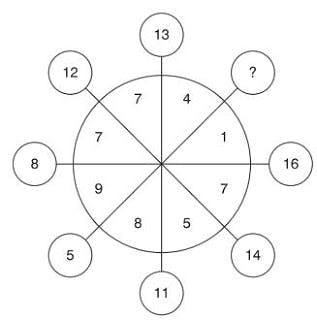
Image source: Genius Puzzles
d) Solve the following:
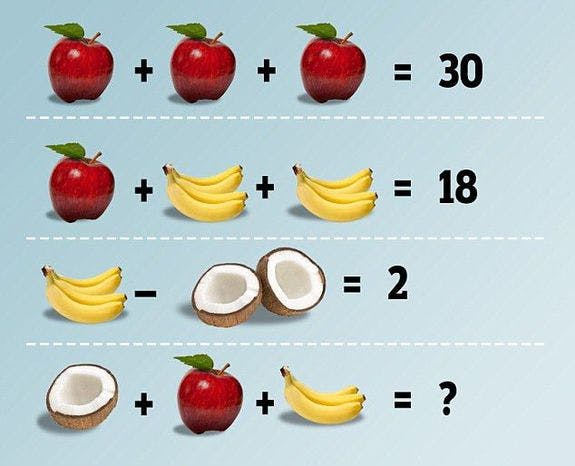
Image source: AOL
a) The missing number is 3612. The answer is the number multiplied by itself and then the number added to itself. Six multiplied by six is 36, and six plus six is 12.
b) It contains each one-digit number, zero through nine, listed in alphabetical order.
c) The missing number is 17. Each number in the circle is the sum of the numbers in the opposite quadrant. In this case, the numbers are eight and nine — added together makes 17.
d) The answer is 14 (or 16), if you’re on the other side of the debate .
3. Prodigy Math Game
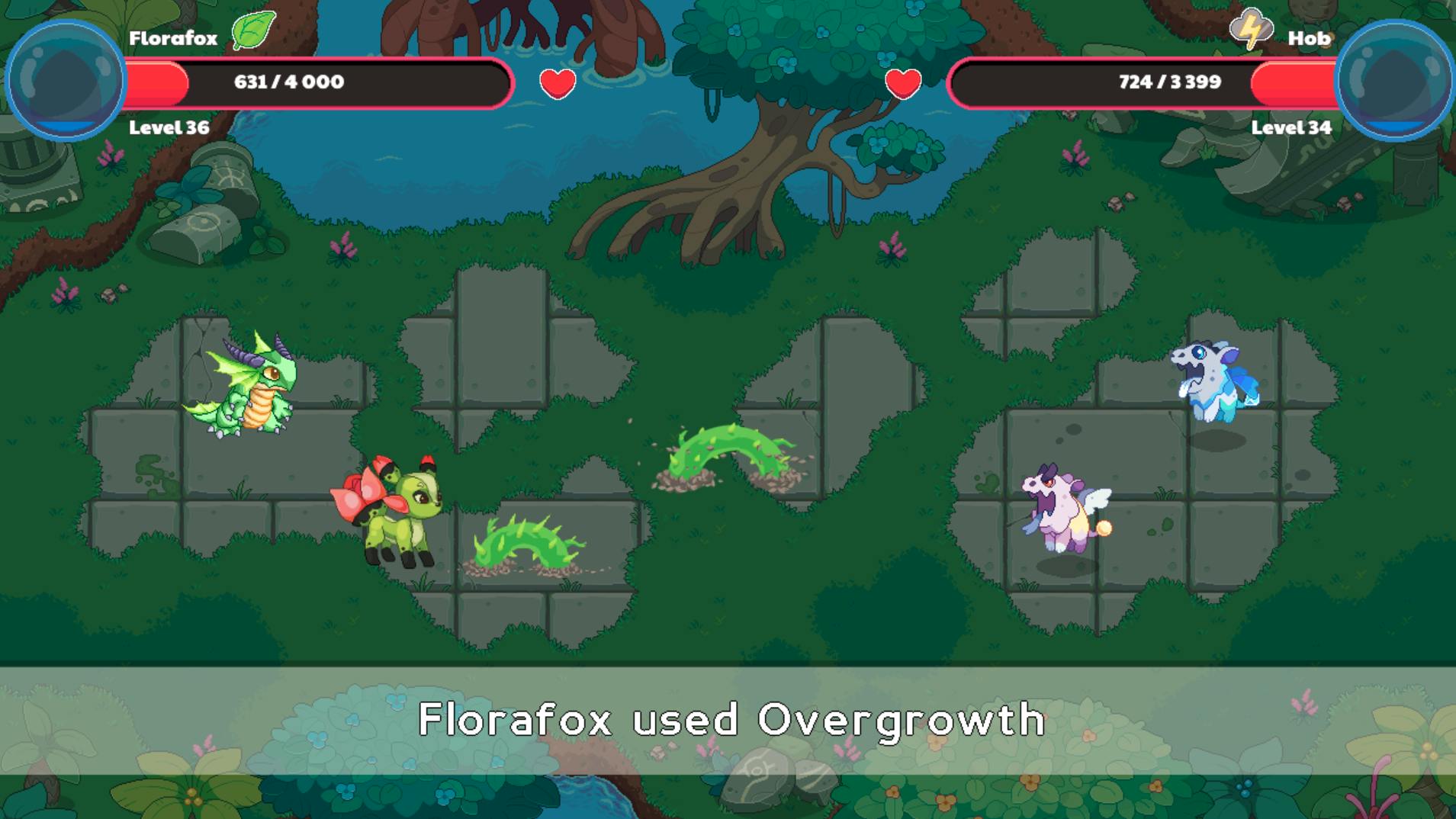
This math activity is a bit different from others on the list. It’s not a traditional brain teaser, but it can also be used as a fun, skill-building alternative to traditional math class.
Prodigy is a game-based learning platform that takes your students on an online fantasy adventure while they answer standards-aligned math questions. It’s engaging and effective at teaching necessary skills.
Prodigy's free teacher tools help you differentiate learning, send assessments in-game and even collect student insights!
Visual brain teasers for kids
1. spot the difference.
This ever-popular activity might remind you of your own childhood — and kids still love it! Spot the difference puzzles require lots of deduction and attention to detail.
Here’s an example of a printable spot the difference activity.
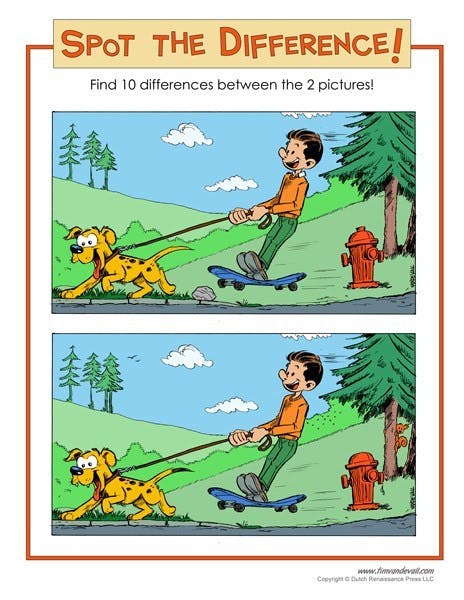
Image source: Tim’s Printables
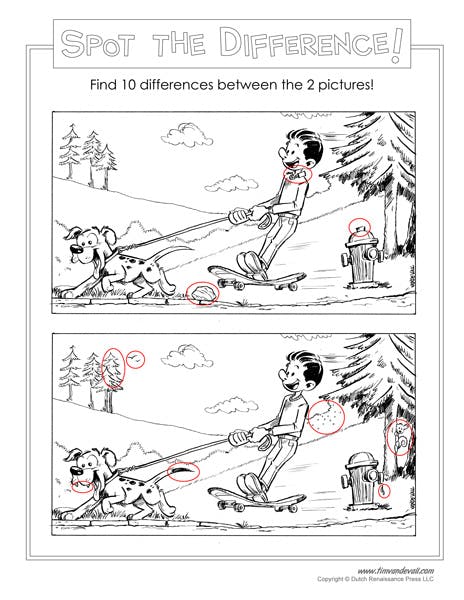
2. Rebus puzzles
A rebus is a visual word puzzle that uses lateral thinking to find its intended meaning. The word or phrase is depicted with a visual illustration, including letters and words. Students must think creatively to figure out the meaning from the clues they’re given.

Image source: Wikipedia

Image source: Stack Exchange
a) Top secret
b) Think outside the box
Visit the link below if you want more fun rebus puzzles for your students:
3. Optical illusions
Get tricky with your students! Optical illusions use visual tricks that alter the perception of what you’re really seeing. Students will love trying to figure out what’s really going on in these examples.
a) How many legs does the elephant have?

Image source: Optics For Kids
b) Are the two squares different colours?
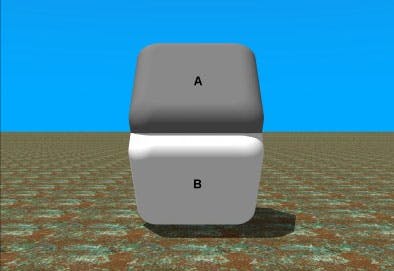
Image source: Brain Den
b) They’re exactly the same colour. If you place your finger over the spot where the squares meet, you can see they’re the same. Try this impossible paper puzzle if you want a more hands-on optical illusion. You can make one to show your class, then have students make their own as a fun brain teaser to show friends and family.
4. Stroop effect test
The Stroop effect was discovered in the 1930s by John Ridley Stroop. During the test, you’re given a list of colour names, with each word being a different colour than what they describe.
The test involves saying the colour of a word, rather than reading the word itself. Your mind must process the two conflicting pieces of information, which slows down reaction speed and requires careful thought to get through.
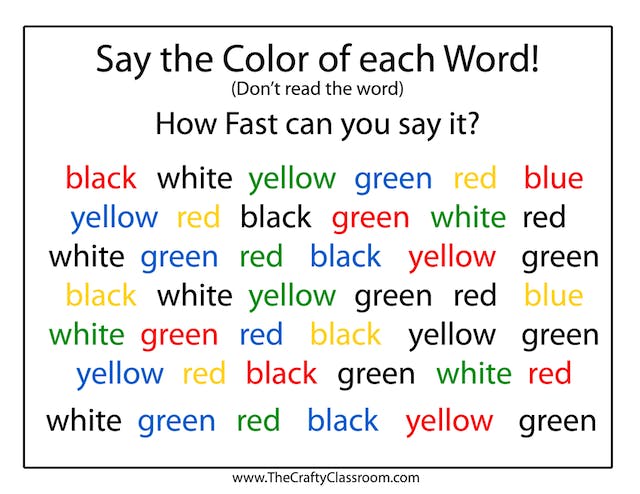
Image source: The Crafty Classroom
Benefits of brain teasers for kids
You know your students enjoy them, but did you know there are plenty of additional reasons to make brain teasers a regular activity in the classroom?
A study on the attention spans of six-year-olds found children who were given brain teasers were more attentive than those who were not — showing brain teasers were effective at boosting children’s attention spans.
Brain teasers for kids can also:
- Strengthen problem solving and critical thinking skills
- Encourage lateral thinking and build new perspectives
- Improve cognitive abilities like memory and processing speed
- Inspire teamwork and communication
- Engage students and motivate them to learn
- Provide necessary breaks from traditional class work
How to use brain teasers in the classroom
In addition to their many learning advantages, brain teasers are a great way to break up the day and engage your students. Here are just a few ways you can use brain teasers for kids as a teaching strategy and maximize the benefits in your classroom:
- Engagement-boosting activity before or after lessons
- Bonus questions in assignments and tests
- Optional “free time” activity
- Encourage team building — split students into groups to solve them together
- Supplement lessons — choose brain teasers about the subject you’re teaching
Final thoughts on brain teasers for kids
No matter what subject or skill you want to focus on, a brain teaser is a great addition to traditional teaching methods. Plus, it’s something students will actually be excited to do.
Remember that brain teaser are designed to be fun for kids. it’s not about finding the right answer, but the mental exercise they get from trying to find the solution.
Use any of the brain teasers in this list whenever you need a boost of energy in your classroom. Bonus points if you can stump any adults!
Create or log in to your free teacher account on Prodigy – a game-based learning platform for math that’s easy to use for educators and students alike. Aligned with standards across the English-speaking world, it’s used by more than a million teachers and 90 million students.
Share this article
Engage and motivate your students with our adaptive, game-based learning platform!
Educationise
Engaging Problem Solving Activities That Spark Student Interest
In this article, we’ll explore a range of engaging problem solving activities crafted to captivate students’ interest and promote active learning across various subjects. From STEM design challenges to literature-based dilemmas, these hands-on activities are meticulously tailored to inspire curiosity, collaboration, and critical thinking in the classroom .
What are Problem Solving Skills?
Problem-solving skills refer to the ability to identify challenges, analyze potential solutions, and implement strategies to resolve issues effectively. These skills involve a combination of cognitive processes, such as critical thinking, creativity, and logical reasoning, that help individuals tackle complex problems in a systematic way.
Developing problem solving skills is essential not only in academic settings but also in everyday life and the workplace. They enhance decision-making, promote adaptability, and encourage the capacity to approach obstacles from multiple perspectives, enabling individuals to arrive at the most effective solutions.
Problem Solving Skills Examples
When exploring examples of problem solving skills, it’s important to understand how various abilities contribute to effective resolution of issues. These problem solving skills examples encompass a range of techniques and strategies that enable individuals to tackle challenges efficiently. Let’s explore these examples one by one:
- Analytical Thinking : The ability to break down complex problems into smaller, manageable components, making it easier to understand and solve the issue systematically.
- Creativity : Using innovative thinking to generate unique solutions to problems, often by approaching challenges from a new or unconventional perspective.
- Critical Thinking : Assessing situations logically, evaluating evidence, and making informed decisions by considering all aspects of the problem before acting. This is a common example of problem solving skills. This is a classic example of problem solving skills, demonstrating how the ability to analyze, evaluate, and address challenges can lead to effective solutions.
- Decision-Making : The ability to weigh different options, assess their potential outcomes, and choose the best course of action to resolve an issue effectively. It exemplifies the essential skills of solving problems, including the ability to weigh different options, assess their potential outcomes, and choose the best course of action to achieve a successful resolution.
- Communication : Sharing ideas clearly and effectively with others, listening to different viewpoints, and collaborating to reach a solution collectively.
- Adaptability : Being flexible in adjusting to new information or changes in circumstances, allowing one to modify their approach when the original plan is no longer effective.
- Research : Gathering relevant information and resources to better understand the problem and find informed solutions based on facts and evidence.
- Collaboration : Working together with others, leveraging diverse skills and knowledge, to solve a problem more efficiently than working alone.
- Time Management : Prioritizing tasks and managing time efficiently to ensure problems are solved within deadlines or before they escalate.
From problem-solving skills examples such as analytical thinking and creativity, which help break down and innovate solutions, to critical thinking and decision-making, which guide the evaluation of options and implementation of the best strategies, each skill plays a pivotal role.
Additionally, skills like communication, adaptability, research, collaboration, and time management are crucial for addressing problems in a comprehensive manner. Understanding and developing these skills can greatly enhance one’s ability to navigate complex issues and achieve successful outcomes.
Problem Solving Activities for Students
In today’s educational landscape, fostering critical thinking and problem solving skills is paramount. As educators, we aim to cultivate a generation of students who excel not only academically but also in navigating real-world challenges with creativity and confidence. Here is the list of problem-solving activities that can help enhance these essential skills.
1. Escape Room Challenge: The Lost Treasure
“Escape Room Challenge: The Lost Treasure” offers compelling problem solving activities for students, immersing them in a thrilling adventure that enhances their critical thinking and teamwork skills as they work to solve puzzles and uncover hidden clues. This interactive experience also serves as one of the best team building problem solving activities, fostering collaboration and communication among participants.
Follow the steps below to implement this activity in the class:
- Introduce the escape room challenge and set the scene with a captivating treasure hunt theme.
- Transform the classroom into an immersive escape room environment with hidden clues and puzzles.
- Divide students into teams and provide instructions for the challenge, emphasizing teamwork and problem solving skills.
- Allow teams to explore the room and uncover hidden clues and puzzles.
- Encourage observation and collaboration as teams work together to solve challenges.
- Present teams with a variety of puzzles and obstacles to overcome.
- Challenge them to solve each puzzle to progress through the adventure.
- Set a time limit for the challenge to create urgency and excitement.
- Encourage teams to work efficiently to unlock the secrets of the treasure before time runs out.
- Foster effective communication and teamwork among team members.
- Emphasize the importance of listening and leveraging each other’s strengths.
- Throughout the challenge, students will develop critical thinking, communication, and problem solving skills.
- Encourage reflection on their strategies and teamwork dynamics.
- Celebrate each team’s success upon completing the challenge.
- Facilitate a debrief session for students to share insights and reflect on their experiences.
With this guide, you can create an engaging escape room challenge that promotes teamwork, critical thinking, and problem solving skills in a fun and immersive learning environment. Incorporating problem solving activities for kids like this one will not only keep them entertained but also sharpen their cognitive abilities as they tackle exciting challenges.
2. STEM Design Challenge: Build a Bridge
“STEM Design Challenge: Build a Bridge” is one of the most engaging problem solving activities for middle school students, offering a fun problem solving experience that enhances their engineering skills and encourages teamwork and innovation
Here is the step by step breakdown of this activity:
- Present the STEM design challenge to students, explaining that they will be tasked with building a bridge using simple materials.
- Supply students with materials such as popsicle sticks, straws, tape, string, and basic construction tools.
- Encourage students to inspect the materials and plan their bridge designs accordingly.
- Prompt students to brainstorm ideas and sketch their bridge designs before starting construction.
- Encourage them to consider factors like structural stability, weight distribution, and material durability.
- Instruct students to begin building their bridges based on their designs.
- Remind them to apply principles of engineering and physics as they construct their bridges.
- As students build their bridges, they’ll encounter challenges and obstacles.
- Encourage them to apply problem solving strategies and make adjustments to their designs as needed.
- Throughout the construction process, facilitate discussions among students.
- Encourage them to reflect on their design choices and problem solving approaches.
- Provide opportunities for students to test their bridges using various weight loads or simulated environmental conditions.
- Encourage them to observe how their bridges perform and make further adjustments if necessary.
8. Bridge-Building Showcase:
- Conclude the challenge with a bridge-building showcase where students present their creations to their peers.
- Encourage students to discuss their design process, challenges faced, and lessons learned.
9. Celebrate Achievements:
- Celebrate students’ achievements and highlight the importance of their creativity and engineering prowess.
- Encourage a spirit of inquiry and innovation as students showcase their bridge designs.
10. Reflect and Conclude:
- Conclude the STEM design challenge with a reflection session.
- Prompt students to reflect on their experiences and discuss the skills they’ve developed throughout the challenge.
By following these step-by-step instructions, students will engage in a hands-on STEM design challenge that fosters critical thinking, creativity, collaboration , and resilience while deepening their understanding of engineering and physics principles.
3. Mystery Box Inquiry: What’s Inside?
It is one of the ideal problem solving group activities that offers creative ways to improve problem solving skills in students, encouraging teamwork and critical thinking as they work together to uncover the secrets hidden within the box.
Incorporating problem solving team-building activities like this fosters collaboration and enhances communication, essential skills for both academic and personal growth. These engaging team problem solving activities challenge participants to think critically and combine their strengths to achieve a common goal.
Follow these steps to carry out this activity in the class:
- Introduction and Setup: Introduce the Mystery Box Inquiry activity and set up a closed mystery box in the classroom.
- Group Formation and Instructions: Divide students into small groups and provide instructions emphasizing teamwork and critical thinking.
- Engage the Senses: Encourage students to gather around the mystery box and use their senses (touch, smell, hearing) to gather clues about its contents.
- Making Observations: Instruct students to carefully observe the exterior of the mystery box and record their observations.
- Formulating Hypotheses: Prompt students to formulate hypotheses about what might be inside the mystery box based on their observations.
- Testing Hypotheses: Invite students to test their hypotheses by proposing various scenarios and explanations.
- Refining Problem Solving Strategies: Encourage students to refine their problem solving strategies based on new information and insights.
- Group Discussion and Conclusion: Gather the groups for a discussion, allowing students to share their observations, hypotheses, and insights. Conclude by revealing the contents of the mystery box and discussing the problem solving process.
- Reflection and Extension: Provide students with an opportunity to reflect on their experience and optionally extend the activity by challenging them to design their own mystery box inquiries.
By following these steps, you can facilitate an engaging Mystery Box Inquiry activity that prompts students to make astute observations, test hypotheses, and refine their problem solving strategies effectively. Through teamwork and problem solving activities, students learn to communicate ideas, share diverse perspectives, and develop strategies that lead to creative and successful solutions.
Incorporating hands on problem-solving activities like this not only enhances critical thinking but also strengthens teamwork, as students collaborate and combine their efforts to solve challenges together.
4. Real-World Problem Simulation: Environmental Crisis
Real-World Problem Simulation: Environmental Crisis” is one of the most engaging problem solving activities for high school students, designed as a group problem solving challenge that immerses students in the complexities of environmental issues, encouraging collaboration and critical thinking to find innovative solutions.
- Introduce the environmental crisis scenario.
- Explain its significance and real-world implications.
- Divide students into teams with varied skill sets.
- Assign roles like researcher, negotiator, presenter.
- Task teams with researching causes, impacts, and solutions.
- Provide access to relevant resources.
- Encourage teams to negotiate with stakeholders.
- Prompt the development of comprehensive strategies.
- Organize a debate or town hall-style discussion.
- Facilitate analysis of proposed solutions.
- Allow teams to implement proposed solutions.
- Monitor progress and outcomes.
- Conclude with a group reflection session.
- Discuss lessons learned and the importance of problem solving skills.
This is one of the problem solving activities for students that can create a simulated environmental crisis scenario, fostering collaboration, critical thinking, and problem solving skills in students.
5. Mathematical Escape Puzzle: Crack the Code
Mathematical Escape Puzzle: Crack the Code” is one of the most intriguing problem solving activities in the classroom, offering an exciting blend of problem solving games for students and challenging puzzles that test their mathematical skills and teamwork. This activity presents a unique problem solving challenge for students, motivating them to collaborate and think critically to solve complex equations and unlock the code.
- Introduce the escape puzzle, explaining the goal of unlocking a hidden code through math equations and logic puzzles.
- Set up materials in the classroom.
- Explain students’ task: solving math equations and logic puzzles to unlock the code.
- Provide puzzle materials to teams or individuals.
- Instruct on effective use.
- Prompt students to solve provided math equations and logic puzzles.
- Encourage collaboration and problem solving among students.
- Offer guidance as needed.
- Monitor student progress and provide assistance when required.
- Celebrate successful completion of puzzles.
- Guide students through unlocking the hidden code.
- Conclude with a reflective discussion on math concepts and problem solving skills applied.
By following these steps, you can engage students in a challenging Mathematical Escape Puzzle that reinforces math skills and promotes problem solving abilities.
6. Literature-Based Problem Solving Activity: Character Dilemmas
Literature-Based Problem Solving Activity: Character Dilemmas” is an engaging problem solving activity for students that enhances problem solving skills in students by challenging them to analyze and resolve complex character dilemmas in literature. This activity not only deepens their understanding of the narrative but also sharpens their ability to think critically and collaboratively.
- Choose literature pieces with rich character development and moral dilemmas that are suitable for your students’ age and maturity level.
- Present the Literature-Based Problem Solving activity to students, explaining that they will engage in thought-provoking analysis and ethical reflection inspired by characters in literature.
- Assign readings or excerpts from the selected literature to students.
- Instruct students to analyze the characters’ motivations, actions, and the ethical dilemmas they face.
- Encourage students to prepare for discussions by taking notes on key points, character motivations, and possible solutions to the dilemmas.
- Host lively discussions where students explore the moral dilemmas presented in the literature.
- Encourage students to express their thoughts, opinions, and interpretations while respecting diverse perspectives.
- Organize persuasive debates where students defend their viewpoints and propose solutions to the character dilemmas.
- Encourage students to use evidence from the literature to support their arguments.
- Prompt students to apply problem solving skills to analyze the consequences of different decisions and actions within the literature.
- Encourage critical thinking as students navigate complex ethical situations.
- Guide students in applying the lessons learned from literature to real-world scenarios.
- Encourage reflection on how the problem solving skills and ethical considerations explored in the activity can be applied in their own lives.
- Conclude the Literature-Based Problem Solving activity by summarizing key insights and takeaways from the discussions and debates.
- Encourage students to reflect on how their understanding of moral dilemmas and problem solving skills has evolved through the activity.
It is one of the problem solving activities through which students will engage in thought-provoking analysis, ethical reflection, and problem solving inspired by characters in literature, fostering critical thinking and ethical decision-making skills in a meaningful and engaging way.
Engaging problem solving activities for students are the cornerstone of active learning, fostering essential skills for success in today’s dynamic world. By seamlessly integrating these hands-on experiences into the classroom, educators inspire curiosity, collaboration, and critical thinking in their students.
Whether through STEM design challenges, literature-based dilemmas, or coding adventures, these problem solving exercises empower students to become adept problem solvers, equipped to navigate the challenges of tomorrow with confidence and ingenuity. Embrace the transformative potential of engaging problem solving activities to unleash the full spectrum of educational possibilities and prepare students for a future brimming with possibilities.
Share this:
Discover more from educationise.
Subscribe to get the latest posts sent to your email.
Type your email…
6 thoughts on “ Engaging Problem Solving Activities That Spark Student Interest ”
- Pingback: 11 Activities That Promote Critical Thinking In The Class - Educationise
- Pingback: 10 Teaching Strategies to Spark Creativity in Students - Educationise
- Pingback: Gamification in Education: Tips and Tricks for Gamified Learning - Educationise
- Pingback: Neuroscience of Learning: 10 Principles for the Classroom - Educationise
- Pingback: 10 Unique Educational Experiences Every Student Should Try - Educationise
- Pingback: DIY Education: 8 YouTube Channels Revolutionizing Learning - Educationise
Leave a Reply Cancel reply
Subscribe now to keep reading and get access to the full archive.
Continue reading

40 Critical Thinking Questions for High School Students
How is electricity being produced from rainwater or do aliens exist if there are so many discoveries about them? High school students are certain to come across queries that question reality, everyday rules, general human existence, or anything out of nowhere!
Young minds are filled with an amazing potential to explore beyond their capabilities and hidden qualities. While high school students might question the existing realities of life, some students might not be aware of their imagination and thinking capacities. That is why it is important to nurture these growing minds with opportunities to question, understand, analyze, find evidence, and arrive at solutions.
In this case, critical thinking questions act as a helpful way to offer an opportunity to broaden their minds to unlimited knowledge and endless possibilities. When students are given a chance to think beyond the ordinary, they experience a sense of freedom in thinking and expressing their views.
Through critical thinking questions, they receive a wonderful chance to analyze, decode the information, and present their views without being right or wrong. Hence, the below-mentioned questions are drafted in a way to initiate abstract and informative conversations thereby boosting critical thinking.
Brain teasing critical thinking questions for high schoolers
Critical thinking skills are essential for measuring the imagination and creativity of students. High school students are likely to use the new age information and influence of others when processing their thoughts. Hence, the below-mentioned questions are a great way to channel their thoughts in a more positively empowered learning environment.
- Do you think it is okay to give up your life if you had to save someone?
- If you could go to your past, what would you change?
- What is the joy of giving for you?
- What is better – giving or receiving? Why?
- If you can change some rules of the school, which ones would you change and why?
- What if you know your future? What does it look like from your perspective?
- What if you are dragged into a situation where you disagree with others?
- What would you do if you are given a task against your willingness to complete it?
- Would you like to do – go to your past or get to know your future? Why?
- What would you choose, 1 million dollars or a lifetime free education? Why?
- What is more important to you, knowledge or money?
- How can you leverage the benefits of social media and how?
- Do you think animals should be free or kept in a zoo?
- What does life look like on the Earth 100 years from now?
- Imagine a world without mobile phones. What would you do?
- If you could choose any profession in the world, what would you choose? Why?
- Would you rather devote your life to helping others through social activities or invest in building a business?
- What is the most important matter of concern that the world needs to address?
- Do you think the voting of high school students matters in Government concerns? Why?
- Which aspect plays a major role in the success of individuals?
- If you could change any one habit of your parents, what would it be?
- If you could travel to any place in the world, where would you go? Why?
- Imagine the world is facing a major power cut issue. What would you do and how would you face the situation?
- What is more important, offering a home to the needy or offering food to the needy on an everyday basis?
- How does the number 0 change life?
- Should teenagers be allowed to make major life decisions?
- Are friendships real in today’s world?
- Does an influential person always influence others with actions and words?
- If animals could talk to you, who would you choose to talk to?
- What is the difference between happiness and achievements?
- Do you think success is the same as happiness?
- Imagine you have only 24 hours left on Earth. How would you spend it?
- What if you are given the option to reside on another planet? What would you do and how?
- Would you forgive your best friend if he/she commits a crime and is found guilty?
- If your mother and best friend are sinking in two different boats and you have the opportunity to save anyone, who would you choose? Why?
- Imagine you are stranded on an island and have access to 5 things. Which 5 things would you choose?
- Which 3 elements make a stronger nation? Why?
- What are the disadvantages of growing up? How would you tackle them?
- Would you be blind or deaf? Why?
- What if you could donate 50% of your wealth and have free food for life? What would you do?
Critical thinking in students: Why is it crucial?
High schoolers are on their way to exploring various subjects and acquiring knowledge from around the world. In such a phase, students must have the ability to think through things and make the right decision. Critical thinking empowers the brain to analyze and understand situations with complete evidence before concluding. Here’s how critical thinking shapes the life of high schoolers.
1. Develops Problem-Solving Skills
Students are sure to come across everyday problems and issues in their academic journey or personal life. While some students may develop stress, others might ignore it. However, the essence of critical thinking helps students solve these issues with intelligence. Whether it is figuring out about the project or solving an issue between friends, thinking and analyzing the possible solutions makes it easy to tackle situations.
2. Enhances Creativity
The advertisements you see every day often talk about the problem and how a product solves it. That’s exactly why you need to develop critical thinking skills. When you can identify the core issue and arrive at solutions only then can you think out of the box. Critical thinking helps students be creative with their solutions and find a way out amidst challenges.
3. Boosts Decision-Making Skills
With every project, assignment, or topic of your thesis , you need to take many decisions in the learning process. Here, critical thinking skills play a crucial role in helping you analyze, decode and disseminate information before making any decision.
4. Builds Open-mindedness
As growing individuals, it is important to be open-minded towards various problems and their suggestions. People who think critically are more likely to understand situations from different points of view. Hence, developing critical thinking skills helps you accept different perspectives and respect the opinions of others. The skill helps a long way when you need to work in a group on your projects. It is because you become capable of thinking from various perspectives.
5. Goal Setting
Success comes with proper planning and execution of tasks. However, you cannot study history if you are weak at math. Similarly, you cannot aim for a 60% growth in your academics if you have been growing at a pace of 30% in each examination. Critical thinking enables you to think practically and map your way out to reach your goals. When you think critically and practically, you can analyze your strengths and weaknesses thereby setting goals accurately.
Critical thinking indeed plays an essential role in shaping the mindset of students and exposing them to different skills simply by developing this one. As you take advantage of the critical thinking questions, know that it is important to keep questioning students to initiate conversations.
Whether it is reflective questions or would you rather-questions , these questions enable them to think beyond their imagination and dive into a world of possibilities. Apart from this, you may also involve students in interactive discussions that boost critical thinking skills.

Sananda Bhattacharya, Chief Editor of TheHighSchooler, is dedicated to enhancing operations and growth. With degrees in Literature and Asian Studies from Presidency University, Kolkata, she leverages her educational and innovative background to shape TheHighSchooler into a pivotal resource hub. Providing valuable insights, practical activities, and guidance on school life, graduation, scholarships, and more, Sananda’s leadership enriches the journey of high school students.
Explore a plethora of invaluable resources and insights tailored for high schoolers at TheHighSchooler, under the guidance of Sananda Bhattacharya’s expertise. You can follow her on Linkedin
Leave a Comment Cancel reply
Save my name, email, and website in this browser for the next time I comment.

15 Problem-Solving Activities for Kids & Teens: Critical Thinking

What is one of the most important skills all students must learn? Is it math or coding? Reading? Writing? While all these skills are indeed vital to success, the one skill that underlines all disciplines is problem solving. All lines of work need great problem solvers to find tomorrow’s solutions, and students of any age can be honing their problem-solving skills. Check out some of these fun problem-solving activities for kids and teens below!
Problem-Solving Activities For Elementary School Kids (Ages 5-10)
From traditional paper-and-pencil activities to online tools, below are some great activities for kids ages 5-10.
1. Coding Courses for Kids
It’s never too early to start learning the foundational concepts of computer programming! There are a number of courses appropriate for young students to start building their problem solving skills, including the award-winning Scratch Ninja course . For the uninitiated, Scratch is a user-friendly colorful drag-and-drop coding tool developed by MIT for making awesome games and animations while learning important coding logic. Or, for students who are visual learners, try a Minecraft Redstone Engineering course to find out how to build awesome inventions! There are many free coding classes to start with, to find your child's interests.
2. Tower Building
Turns out that kindergartners might be better engineers than grownups (at least according to this experiment)! The challenge was as follows: given 20 pieces of spaghetti, a yard of tape, and a yard of string, build the tallest possible tower that can support 1 marshmallow on top. After various groups of people tried it from Stanford and other universities, kindergartners ended up beating them for creating the tallest tower. Challenge your student to see how tall they can make their tower too!
3. Crosswords
Whether taken out of the newspaper or off of the web, crosswords are a useful logic puzzle for kids to work on. Crosswords encourage students to use context clues, as well as their reasoning skills by eliminating possible options as they progress. Plus, it’s easy to vary the difficulty of the puzzles, as well as find fun, themed crosswords for different holidays! There's even a Thanksgiving crossword for your student to try.
4. Jigsaw Puzzles
There’s nothing like a good, ole’ fashioned puzzle to challenge the mind. Each person takes a different approach to puzzle solving, whether they organize their pieces first, find all the corners, or do something totally different. Exploring different strategies for solving puzzles is an effective introduction to independently creating strategies for problem solving. This is a solid choice for students who are visual learners.
An age-old classic, LEGOs are a fantastic way to combine creative skills with problem solving. Students need to follow sequential steps and visualize to create their LEGO designs. It’s even better when students go beyond the kit instructions to create their own LEGO build, as students will have to learn to utilize limited resources while coming up with a structured plan for designing their idea. LEGO NASA kits are a popular starting point.
Problem-Solving Activities For Middle School Tweens (Ages 11-13)
Middle schoolers (ages 11-13) will want to be challenged more with their activities, and these are some effective activities for encouraging growth.
6. Middle School Coding Courses
By the time they reach middle school, students will be ready to take on more advanced coding concepts, regardless of their prior coding experience. For those who have no prior coding experience, the Accelerated Scratch course is an excellent option, as it will introduce students to basic coding concepts while allowing them to make their games and animations. Students with some prior coding experience may want to try the Minecraft Code to Mod course, builds upon basic coding concepts like loops, conditionals, and more while building students' creativity and critical thinking.
7. Birthday Ordering
An activity commonly done at summer camps, the silent birthday lineup is an excellent problem-solving activity for groups. The goal is for students to line up in chronological order based on their birthdays, without talking at all. Working in total science requires students to think outside the box to accomplish their goal, and to prioritize teamwork. Try timing the students to see how quickly they can get it done, then let them reflect on the activity afterwards to see what strategies worked and what didn’t.
8. Event Planning
Have students plan their own event, like a fundraiser, a social, or a competition for their coding club . This will require students to collaborate by delegating tasks, coordinating supplies, budgeting, and more. Even planning something as simple as a pizza party still requires some logistical planning, and students will benefit from struggling through the process. Plus, they can get to enjoy the results of their work when the event finally arrives!
Arduino circuit boards are an excellent choice for children interested in engineering. Because Arduino is widely-popular, there are countless tutorials demonstrating its capabilities, such as creating a controller, custom RGB lighting, robotics, or more. Once students learn the basics, they can use Arduino boards to come up with creative solutions to their own problems. This is an excellent idea for highly-motivated kids who like to work by themselves. Your child might also enjoy taking a live online Smart Devices: Arduino course led by an expert instructor.
Sudoku is an excellent number puzzle and a great problem-solving exercise. It requires students to evaluate multiple possible options as they try to fill in the puzzles, so students need to be able to create an organized approach to be successful. There are various difficulty levels for sudoku, so students can start easy, then advance as they become proficient at solving the puzzles.
Problem-Solving Activities For High School Teens (Ages 14+)
High school (14+) is a good time to incorporate group work into the activities, as students will need to learn to work collaboratively for their future in college and beyond.
11. Coding for Teens
Once reaching high school age, students are ready to tackle the complexities of text-based coding. This is where students can focus on their interests, whether it be web design , AI, app design , and more. Create & Learn’s Python for AI course is a good option, as Python is one of the most widely-used programming languages in the world. Students interested in game design might try the Roblox Studio course , which teaches students how to program their own Roblox games (or try the Beginner Roblox Game Coding course if they have limited previous coding experience.)
12. Robotics Club
Many different school programs offer robotics teams and robotics competitions , using tools such as VEX robotics . Robotics is a great way to combine computer science, mechanical engineering, and problem-solving skills. If there is no robotics team at your student’s school, consider trying a robotics kit such as the Makeblock mBot Ranger .
13. Egg Drop
This classic experiment is a lot of fun for students, and makes for a good competition as well. Students must build some sort of structure that will prevent an egg from breaking when dropped from a certain height (like the top of a staircase). It works best when students are restricted with the resources they can use; for instance, define a “ budget ” for parts that they can’t exceed, or give everyone the same materials to work with .
14. Debate Club
Whether deciding public policy or the best ice cream place in town, having the ability to engage in meaningful debate is critical. Debate forces students to self-analyze, listen, and think critically before making decisions. These skills benefit students’ futures by making them strong, independent thinkers. Check out these speech and debate competitions . And here are some tips for starting a debate club .
15. Science Fair
Science fairs pose an excellent opportunity for exploring the scientific method, both through creating personal projects and checking out other students’ presentations. By encouraging students to come up with their own projects, they must identify some question or problem and find a way to solve it. This can be the most challenging kind of problem-solving, as it requires the student to take initiative in finding their own ideas, but also can be the most rewarding. Try the Google Science Fair Competition .
Enjoy Problem-Solving Activities For Kids
And there you have it: problem-solving activities for students from elementary through high school age. Of course, there are many more ways to build critical-thinking abilities like problem-solving. For more ideas, check this list of awesome after-school enrichment activities .
Written by Create & Learn instructor Dominic Occhietti. Dominic is a graduate of Michigan State University, where he studied music performance and computer science. He thoroughly enjoys teaching, whether that be coding classes, French horn lessons, or even downhill skiing lessons!
You Might Also Like...

Educational AI Toys And Robots For Kids

AP Computer Science Tutors And Exam Prep Tutoring Help

15 Problem solving activities for students

In this guide
- 1. The detective game
- 2. Help ‘em out
- 3. What if…
- 4. Move IT!
- 5. The build
- 6. Just survive
- 7. Good old scavenger hunt maybe with a twist
- 9. Tower of terror
- 10. Community problem solving
- 11. Community problem solving documentary
- 12. Digital storytelling
- 13. Minefield/Lead the blind
- 14. Design sprints
- 15. Debates
Problem solving entails identifying, analyzing, and addressing challenges or obstacles using critical thinking, creativity, analytical skills, and reasoning. The World Economic Forum consistently ranks critical thinking and problem solving as top skills for the future in their list of essential abilities.
Why is problem solving an important skill for students?
In a 2020 report, the World Economic Forum emphasized the growing significance of critical thinking and problem-solving skills in the upcoming years ( Whiting, 2020 ). These skills are vital not only for academic success but also for navigating challenges beyond the classroom. Let’s explore four key benefits of problem-solving skills for students.
- Student centered learning: Problem solving encourages student engagement by encouraging hands-on exploration and discovery. Students fully engage with a topic, they are not expected to simply absorb and memorize information. It recognizes and honors students’ individual learning pace, as well as their unique strengths, interests, and motivations.
- Enhanced critical thinking: By tackling problems from diverse perspectives and evaluating information from various sources and viewing the problem from various angles, students are able to develop improved critical thinking skills. Problem solving also cultivates systems thinking, enabling students to grasp the interconnectedness of systems, complex issues, and devise holistic solutions.
- Confidence building: Through regular practice, students gain confidence in their problem solving skills, equipping them to address challenges across a wide variety of subject areas and real-life scenarios. “The goal in teaching problem-solving is for it to become second nature, and for students to routinely express their curiosity, explore innovative solutions, and analyze the world around them to draw their own conclusions.” (Marshall, 2022)
- Teamwork and communication: Engaging in problem solving activities nurtures essential teamwork skills such as communication and collaboration. Students learn to actively listen, respect diverse perspectives, and resolve conflicts in a constructive manner. Moreover, they develop goal setting abilities, organization, and build a sense of personal accountability within a team environment.
Problem solving activities for elementary
Problem solving activities can range from simple to complex and short to long.
1) The detective game
- Gather 5-10 clues about a person, place, historical event, pop culture phenomenon, animal, etc. these can be physical clues or images of clues.
- Place the clues to a bag and have students draw one clue at a time.
- Encourage students to work in small groups to solve the mystery.
- Require a minimum number of clues to be drawn (2-3) before attempting their first guess.

2) Help ‘em out
- Engage students in brainstorming sessions while reading about historical events or fictional characters.
- Encourage small group discussion and decision making.
- Students can work at desks or on whiteboards.
- Challenge the students to identify the problems faced and devise creative solutions to alter the outcomes.
3) What if…
- Create a list of moral dilemmas for students to ponder, ChatGPT would be perfect for this.
- Cut them up and put them in a bag for students to pull out of or use an online randomizing tool like WheelPicker to make the selection.
- Students then have to share how they would handle the situation using ethical reasoning and decision making skills.
Here are the prompts I used on ChatGPT:
I am looking for a list of 15 moral dilemmas for elementary students to try and solve.
And a follow-up prompt:
Could you give 10 more that are based around honesty, fairness, respect, and peer pressure?
And here are 10 dilemmas ChatGPT came up with in seconds:
- Truth dilemma: Your friend breaks something and asks you not to tell anyone. Should you keep their secret or tell an adult what happened?
- Fairness dilemma: You’re playing a game and your friend keeps losing. Do you let them win to make them feel better or play your best?
- Respecting property dilemma: You find money on the ground. Do you keep it, try to find the owner, or turn it into a teacher?
- Honesty dilemma: You accidentally take something that belongs to someone else. Do you return it, keep it, or ignore what happened?
- Respect dilemma: Your friend likes a certain game, but you don’t. They invite you to play. Do you decline and risk hurting their feelings, or play to make them happy?
- Cheating dilemma: You notice someone cheating during a class assignment. Should you tell the teacher or keep quiet?
- Environment dilemma: You see someone littering in the park. Do you pick up the trash, ignore it, or say something to the person?
- Privacy dilemma: You find a diary belonging to your sibling or friend. Should you read it or respect their privacy?
- Homework dilemma: You finish your homework but notice that your friend forgot to complete theirs. They ask to copy your work. What do you do?
- Peer pressure dilemma: Your friends want to gossip about another classmate. Do you join in, stay silent, or change the subject?
4) Move IT!
In this activity students are required to move an object across the classroom while navigating various constraints.
- Introduce limitations such as restrictions on carrying the object, it can’t touch the floor, limited steps, use of specific body parts, or communication limitations with team members.
- Encourage collaborative problem solving and creative thinking to overcome the obstacles.
5) The build
Provide students with materials like straws, marshmallows, paper cups, etc. and challenge them to build. Challenges can be the tallest freestanding tower, a bridge that can hold a certain weight, or other structures following specific rules. Students must learn to think creatively, collaborate, and iterate.

Problem solving activities for middle school
Middle school problem solving can also utilize those activities mentioned for elementary school with some slight tweaks. But, here are some more middle school style activities.
6) Just survive
Use survival scenarios to encourage small groups to employ critical thinking, collaboration, and creative problem solving skills. These scenarios immerse students in real-world situations and foster resilience and adaptability.
Many scenarios can be found online. Here are a few:
- Survival Island (complete with Google Slides)
- Plane Crash (survival game with a Hatchet by Gary Paulsen feel)
- Moon Landing (space survival game)
7) Good old scavenger hunt maybe with a twist
Scavenger hunts require problem solving skills to solve clues, think critically, and collaborate to complete the hunt. A fun and innovative way to do this was created by a friend named Kathi Kersznowski, co-author of Sail the 7Cs with Microsoft Education, called FlipHunt:
A Fliphunt is a video-based scavenger hunt that is completely organized and run in the AMAZING Flip (formerly Flipgrid) environment. It is a wonderfully fun way to get students up and moving while exploring new learning or documenting understanding using the most beloved edtech site for amplifying student voice and student engagement in ways never known before! https://kerszi.com
Escape rooms are an amazing way to promote problem solving and critical thinking with middle school students. Students are presented with a scenario or challenge within a controlled environment, such as a themed classroom or designated area, where they must work together to decipher puzzles, uncover clues, and solve challenges within a set time limit. Escape rooms provide immersive and engaging problem-solving experiences.
There are a number of places teachers can go to find escape rooms, some paid, some free or freemium, and some physical with locked boxes or digital using Google Sites or Google Forms.
- BreakoutEDU – Standards aligned Escape Room games.
- Digital Escape Rooms from Ditch That Textbook
- How to make your own digital escape room with Google Forms
9) Tower of terror
This is a “Red Solo Cup” cup stacking game.
- Students are given 3 cups and 2 large index cards.
- Cups are stacked with a card in between each cup.
- Student teams have 3-10 minutes (be fluid with your time depending on the class) to pull the cards and get the cups to nest on top of each other, earning a point for each successful attempt. Check out this X (Twitter post) by Jonathan Alsheimer , Tower Of Terror . This quick, simple game encourages teamwork, communication, critical thinking, and collaboration in a fun fast paced way.
10) Community problem solving
Empower students to address real-world problems from the local community or your school community. Maybe it’s a dangerous intersection, food waste with school lunches, or single-use plastics in the cafeteria. Students can research, analyze data, and propose solutions, fostering civic engagement and social responsibility. This is an activity that can also be used for high school students.
Problem solving activities for high school
High school problem-solving activities build on foundational skills while providing opportunities for deeper exploration and application. Here are some elevated ideas tailored to high school students:
11) Community problem solving documentary
Challenge students to create short documentaries using their phones as cameras about solving problems they see in the community, in school, or in the world. Students can edit directly on their phones, on sites like Canva , WeVideo , or Capcut .
12) Digital storytelling
Encourage students to harness the power of Digital storytelling to promote problem solving. Whether through videos, graphics, podcasts, or interactive presentations, data visualization, or digital books ( BookCreator ), students can craft compelling narratives that inspire action and promote a problem-solving mindset.
Check out Michael Hernandez’s book Storytelling with Purpose Digital Projects to Ignite Student Curiosity and you can listen to Michael on the TeacherNerdz Podcast .
13) Minefield/Lead the blind
This is an outstanding activity created by Dr. Krista Welz & Melissa Welz which involves communication, collaboration, and planning. The “Minefield” activity is where one student navigates through a “Minefield” guided only by verbal commands from their peers. This hands-on exercise promotes teamwork, planning, and effective communication skills. Here is a detailed Google Slides explanation by the creators.
14) Design sprints
Introduce students to the concept of design sprints, a structured process for solving complex problems through rapid prototyping and user feedback. Small teams collaborate intensely over a short period, usually five days (can be shorter a class period or a few days), to ideate, prototype, and validate solutions. Here is a famous design sprint from IDEO shown on ABC’s Nightline, the shopping cart design sprint:
Here are a few ideas:
- Redesigning the school cafeteria menu: Students work collaboratively to identify issues with the current cafeteria menu, brainstorm innovative solutions, create prototypes of redesigned menus, and gather feedback through testing sessions to ultimately present improved menu designs to school administrators.
- Redesigning classroom layouts for enhanced learning: This sprint focuses on reimagining classroom setups to optimize student learning experiences. Students research, ideate, prototype, test, and present innovative classroom layouts designed to foster a more engaging and effective learning environment.
- Creating solutions for reducing school waste: Students address sustainability concerns by identifying sources of waste within the school, brainstorming eco-friendly solutions, prototyping waste reduction strategies, testing their effectiveness, and pitching refined solutions aimed at minimizing waste and promoting environmental stewardship.
- 11 Activities from IDEO’s d.school for educators: Link
15) Debates
Facilitate lively debates on contemporary issues to stimulate critical thinking and persuasive communication skills. Topics could include:
- Establishing a universal basic income to address poverty.
- Social media regulation to address misinformation and hate speech on platforms.
- Banning TikTok or any social media platform
- Animal testing for cosmetics and scientific purposes.
- Space exploration funding: Should governments invest more resources in space exploration and colonization efforts, or should these funds be allocated to other pressing issues on Earth?
As we navigate an era of unprecedented change and uncertainty, the need for problem-solving skills has never been more pressing. Gone are the days of lifelong careers; instead, today’s students face a landscape where adaptability and innovation are key. By integrating problem-solving activities tailored to elementary, middle school, and high school students, educators play a pivotal role in equipping the next generation with the tools they need to thrive.
As educators, parents, and stakeholders, we must acknowledge the role of problem-solving skills in shaping resilient, creative, and adaptable individuals. Educators should prioritize the cultivation of these essential skills in our schools and communities, empowering students to confront challenges with confidence, innovation, and creativity. When we do, we not only prepare them for the future but also foster a generation capable of shaping a brighter tomorrow.
*Many, if not all, of the activities above can be adapted up or down the grade levels. *
- Daneshgari, F. (2023, March 29). High School Problem-Solving: 6 Activities That Work . Safes Parental Control App. Retrieved April 7, 2024, from https://www.safes.so/blogs/problem-solving-activities-for-high-school-students/
- Educator Guides: Activities from d.school Books — Stanford d.school . (n.d.). Stanford d.school. Retrieved April 7, 2024, from https://dschool.stanford.edu/resources/educators-guides-books
- Engaging Problem Solving Activities for Middle School Students . (n.d.). Everyday Speech. Retrieved April 3, 2024, from https://everydayspeech.com/sel-implementation/engaging-problem-solving-activities-for-middle-school-students/
- 5 Problem-Solving Activities for the Classroom . (2013, February 14). Resilient Educator. Retrieved April 7, 2024, from https://resilienteducator.com/classroom-resources/5-problem-solving-activities-for-the-classroom/
- Foshay, W. R., & Kirkley, J. (1998). Principles for Teaching Problem Solving . PLATO Learning Inc. https://www.researchgate.net/publication/262798359_Principles_for_Teaching_Problem_Solving
- Khanna, B. (2023, September 29). World Economic Forum Warns of Skills Gap in the Future of Work . LinkedIn. Retrieved April 3, 2024, from https://www.linkedin.com/pulse/world-economic-forum-warns-skills-gap-future-work-bhupendra-khanna
- Marshall, M. (2022, October 5). Benefits of Problem-Solving in the K-12 Classroom – Institute of Competition Sciences . Institute of Competition Sciences. Retrieved April 3, 2024, from https://www.competitionsciences.org/2022/10/05/benefits-of-problem-solving-in-the-k-12-classroom/
- Understanding the Importance of Teaching Creative Problem-Solving in Elementary Schools . (n.d.). Everyday Speech. Retrieved April 3, 2024, from https://everydayspeech.com/sel-implementation/understanding-the-importance-of-teaching-creative-problem-solving-in-elementary-schools/
- Weil, Z. (2016). The World Becomes What We Teach: Educating a Generation of Solutionaries . Lantern Publishing & Media.
- Whiting, K. (2020, October 21). What are the top 10 job skills for the future? The World Economic Forum. Retrieved April 3, 2024, from https://www.weforum.org/agenda/2020/10/top-10-work-skills-of-tomorrow-how-long-it-takes-to-learn-them/
Ronald M. Nober
Technology/STEAM Teacher
Ron Nober is a technology/STEAM teacher and co-host of the TeacherNerdz Podcast. He has a focus on using the United Nations Sustainable Development Goals (SDGs) in the classroom as well as connecting technology to social good.
Other posts

Want more content like this?
Subscribe for blog updates, monthly video releases, trending topics, and exclusive content delivered straight to your inbox.

Try ClickView FREE today
Trending Post : Impulse Control Activities for Kids

25 Fun Problem Solving Activities for Kids

Problem-solving activities for kids : Explore 24 fun problem-solving games and activities, and learn effective tips and strategies to teach kids problem-solving skills. If you want to explore problem-solving strategies more in-depth, you can also grab our workbook “ Problem-Solving for Kids ” (printable resource).
Problem-solving is the cognitive process of finding solutions to challenges or complex situations.
A systematic approach to problem-solving tends to include defining the problem, gathering information and data, generating potential solutions, evaluating the pros and cons of each solution, making a decision , and implementing the chosen solution.
Effective problem-solving often requires critical thinking , a good dose of creativity, and the ability to consider multiple perspectives. It may also involve identifying patterns, breaking down a problem into manageable chunks, and applying our logic to develop solutions.
Problem-solving is present in everyday situations and across all fields: business, science, personal life, and education. There is not one single aspect in our lives where we don’t need to apply our problem-solving skills.
Table of Contents
- Problem-solving steps
- Development of problem-solving in childhood
- Benefits of developing problem-solving skills
- 10 Tips to teach kids problem-solving skills
- 10 Examples of problem-solving strategies
- 25 Problem-solving activities and games for kids
Problem-Solving Steps
Some key components of problem-solving include:

- Identifying the problem Recognizing and defining the issue or challenge that needs to be addressed.
- Analyzing the problem Investigating and understanding the underlying causes, factors, and relationships related to the problem.
- Generating solutions Generating potential solutions or strategies to address the problem.
- Evaluating all possible solutions (Pros and Cons Analysis) Assessing the feasibility, effectiveness, and potential consequences of each solution. Considering the positive and negative aspects of each solution.
- Decision-making Selecting the best solution based on our analysis and judgment.
- Implementing the best solution Actioning our chosen solution
- Monitoring progress and results
- Reflecting on the outcomes Reviewing and evaluating the outcomes of the implemented solution, learning from the experience, and making adjustments if necessary.
Development of Problem-Solving Skills in Childhood
Children begin to develop problem-solving skills from a very early age, and these skills continue to develop and refine throughout childhood and adolescence.
Babies soon learn about action and reaction. And, as early as eight months, they begin to acquire an understanding of cause and effect (they shake a rattle, it makes a sound; they push a toy, it falls)
Between 13 and 24 months, they start solving simple problems through trial and error and engage in symbolic play using their imagination.
As children progress into middle childhood (ages 7-11), they develop more advanced problem-solving skills. They become capable of understanding multiple perspectives and can consider multiple factors when solving problems. They start using logic and reasoning to solve increasingly complex problems.
During adolescence (ages 12 and up), problem-solving skills continue to develop. Teenagers can generate and test hypotheses and use deductive and inductive reasoning to arrive at solutions.
Each child will develop their problem-solving skills at their own pace. Some children may show advanced problem-solving abilities at an earlier age. Others may require more time and experience to develop these skills fully.
Benefits of Developing Problem-Solving Skills in Children
Problem-solving skills in children are crucial for children’s cognitive, social, and emotional development. It equips them to approach challenges, think critically, make informed decisions, and find creative solutions.
The benefits of good problem-solving skills in children include:
- Positive impact on self-esteem and confidence Identifying, analyzing, and solving their problems contributes to our kids’ sense of competence .
- Fosters Independence and Autonomy When our kids are able to problem-solve on their own, they take one more step toward independence
- Academic Success Problem-solving skills contribute to academic achievement, as they help students analyze and solve complex problems across various subjects.
- Cognitive Development Problem-solving fosters cognitive skills such as logical reasoning, analytical thinking, and abstract reasoning.
- Critical Thinking Problem-solving enhances critical thinking abilities, enabling children to evaluate information, identify biases, and make informed judgments.
- Creativity Problem-solving promotes creativity by encouraging children to think outside the box, generate innovative ideas, and explore multiple solutions.
- Emotional Resilience Problem-solving skills enhance emotional resilience by enabling children to manage and cope with challenges effectively, reducing stress and promoting well-being.
- Improved Social Interactions/Relationships Problem-solving abilities contribute to better social interactions, conflict resolution , and peer collaboration, promoting healthy relationships.
- Future career success Problem-solving skills are highly valued in the workplace and can positively influence future career success.
10+ Helpful Tips to Teach Kids Problem-Solving Skills
Teaching problem-solving skills to kids is an important part of their cognitive development. It helps them develop critical thinking, creativity, and resilience.
But how can we help our kids and students to develop this essential skill?
We can help our kids and students develop and improve their problem-solving skills in many ways. These are some helpful tips that you could consider:
- Model problem-solving behavior When you see yourself in a problem-solving situation, verbalize your thought process: “I wonder how I should address this issue. I guess my alternatives could be… They all have positives and negatives….”
- Let them participate in the problem-solving situation “Could you help me solve this puzzle?”
- Provide real-life problem-solving situations Real-life scenarios make problem-solving more meaningful for kids. For example, discuss how to resolve a conflict with a sibling or how to make the morning routine smoother.
- Teach them how to break down problems Show them how to break down complex problems into manageable sub-problems.
- Practice brainstorming Create brainstorming situations where all the family (or the classroom) can contribute to solving a problem
- Teach the value of perseverance Sometimes, we must stick to a situation and persevere before finding a solution. Encourage kids to persevere through challenges and setbacks, emphasizing that mistakes and failures are opportunities for learning.
- Encourage critical thinking Encourage kids to analyze situations, consider different perspectives, and evaluate possible outcomes.
- How could we make your school lunch healthier but still yummy?
- How could we reuse/recycle all this paper?
- What could we do to help you remember all the steps in your night routine?
- Encourage reflection When they can find a solution for a problem, don’t jump to solve it for them. Encourage them to reflect on the problem and find and evaluate alternatives. And after a problem is solved, think about the whole process and the learnings. “How did this work?” “What did you learn” “Do you need to change anything?”
- Foster creativity Provide them with opportunities for imaginative play, creative projects, and brainstorming sessions.
- Teach the value of teamwork Teach kids the importance of working together to solve problems. Engage them in group activities or projects that require teamwork and collaboration. This helps kids learn the value of different perspectives and work together towards an objective while they practice their communication skills.
- Teach decision-making skills Teach kids how to approach problems systematically by going through the steps we have mentioned in our first section.
- Encourage both structured and free play. Structured play can help you create good problem-solving situations, while free play will foster creativity.
Developing problem-solving skills is an ongoing process that will also continue in adulthood. Provide your kids with guidance and support, and celebrate their efforts and achievements along the way.

10 Examples of Problem-Solving Strategies
There are different strategies that can help us solve a wide range of problems. Here are some commonly recognized problem-solving strategies:
1 . Trial and Error : This is the first problem strategy that we ever learn. We start using trial and error strategies in infancy, and it continues serving its purpose in many situations. This strategy involves trying different solutions or approaches and learning from the errors or failures until a successful solution is found.
2. Algorithm: An algorithm is a step-by-step procedure or a set of rules that guarantees a solution to a specific problem. It is a systematic approach to problem-solving that follows a predetermined set of instructions.
3. Heuristics: Heuristics are mental shortcuts or rules of thumb that help simplify problem-solving by providing quick and efficient strategies. While heuristics can be effective in many situations, they may also lead to biases and errors.
4. Divide and Conquer: This strategy involves breaking down a complex problem into smaller, more manageable chunks or steps that make the overall problem easier to tackle.
5. Working Backwards: This strategy involves starting from the desired outcome and working backward to determine the steps or actions needed to reach that outcome. We often use this problem-solving strategy when we set goals.
6. Analogical Reasoning: Analogical reasoning involves drawing parallels between the current problem and a similar problem that has been solved in the past. By applying the solution from the previous problem to the current one, individuals can find a solution more efficiently.
7. Brainstorming: Brainstorming gets lots of brains working on the same problem. It is a great collaborative problem-solving strategy that can bring different perspectives and experiences to the table and may result in lots of creative ideas and solutions.
8. Decision Matrix: A decision matrix is a systematic approach to evaluating and comparing different options or solutions. It involves creating a matrix that lists alternatives and the criteria for evaluation. It assigns weights or scores to each criterion to come up with the optimal alternative.
9. Root Cause Analysis: Sometimes, we need to understand what is causing a problem before we can attempt to solve it, as different causes may require different approaches (for example, when you are sick, your doctor may need to understand what is causing the problem before prescribing a medicine)
10. Simulation and Modeling: Simulation involves creating a simplified representation or model of a problem situation to gain insights and test different scenarios.
Our choice of strategy will depend on the problem, available resources, and our own personal preferences and circumstances. We may also need to combine strategies or apply different ones to different aspects of a complex problem.

(Disclosure: We are a participant in the Amazon Services LLC Associates Program, an affiliate advertising program designed to provide a means for us to earn fees by linking to Amazon.com and affiliated sites. You can also read our Disclosure & Disclaimer policy here )
Best Problem-Solving Activities for Kids
Play-based activities are centered around play and are designed to engage children in active learning and exploration. And fun problem-solving activities are a great way to develop children’s critical thinking, creativity, and decision-making skills.
In this section, we will review some problem-solving games and activities that will engage your kids’ critical-thinking skills and creativity.
1. Puzzle Games Puzzles are a fun activity for children of all ages. Young children will enjoy simple puzzles, while older children (and adults!) can have fun with more complex ones. Encourage them to use logical thinking and problem-solving strategies to complete the puzzles.
2. Crosswords A crossword is another fun type of puzzle and a good source of mental stimulation.
3. Sudoku Sudoku is a popular logic-based puzzle that involves filling a grid with numbers.
It can be extremely easy or very challenging, adaptable even for young learners.
Let’s go now for a couple of building challenges!
4. Build the Tallest Tower Give the child a set of materials (Legos, building blocks, wooden blocks, or other construction materials) and ask them to build the tallest tower they can. This simple game will encourage them to problem-solve as they build and figure out how to make the tower stable.
5. Build Towers with Different Materials Ask your child to build three different towers with different materials. Then assess how stable they are and how much weight they can hold. Analyze the pros and cons of using each type of material.
6. Treasure Hunt Set up a treasure hunt with clues leading to hidden objects or rewards. Children will have to follow the clues and solve puzzles to find the ultimate prize. This activity encourages problem-solving, critical thinking, and teamwork.
7. Scavenger Hunt Playing Scavenger Hunt can be a fun way for our kids to put their creative problem-solving skills to good use. Provide them with clues and puzzles that they must solve in order to find the next clue.
8. Mystery Bag Fill a bag with random objects and ask children to come up with creative uses for each item. Encourage them to think outside the box and find innovative solutions.
9. Memory Game While memory games primarily focus on memory retention and recall, they can indirectly contribute to problem-solving skills by developing cognitive abilities such as attention, information processing, and adjusting their strategies.
10. Role-Playing Scenarios Create role-playing scenarios where children have to solve a problem or make decisions. For example, pretend to be stranded on a desert island and ask them to decide what items they will take and how they will survive.
11. Role-Play Social Situations Work in developing social skills with social problem-solving situations.
12. Brainstorming Sessions Choose a topic or problem and hold brainstorming sessions where children can generate as many ideas as possible. Encourage them not to limit themselves (even if alternatives feel unfeasible!)
13. Team Building Activities and Games Engage children in team-building games like building a balloon tower. Each team member will need to collaborate, communicate, and problem-solve together to complete the project.
14. Escape Rooms An escape room is a super fun team problem-solving activity.
In an escape room, participants are locked inside a themed room and must work together to solve puzzles, find clues, and accomplish tasks within a given time limit in order to “escape” from the room.
15. Science Experiments Conduct simple science experiments that involve problem-solving. For example, in the classic “sink or float” experiment, children predict and test which objects will sink or float in water.
Problem-Solving Board Games
There are many board games that will test our kids problems solving activities. These are just a few examples:
16. Cluedo Players must solve a murder mystery by deducing the murderer, the weapon used, and the location of the crime. Players collect and examine clues to eliminate possibilities and make logical deductions.
17. Codenames Another classic game where players are split into two teams and must guess words based on clues from their teammates.
There are many codenames games available, including themes like Disney or Harry Potter.
18. Mastermind Game In this strategy game players take turns setting and solving secret codes
19. Scrabble Scrabble is a classic word game where players form words on a game board using letter tiles.
Kids must use their problem-solving skills to analyze the available letters, consider the best word combination and strategically place those words to score the highest points.
Learning Problem-Solving with Card Games
Card games provide opportunities for kids to develop problem-solving skills such as strategy, memory, pattern recognition, decision-making, and observation.
Just a couple of examples:
20. Uno Uno is a classic card game where kids match cards based on color or number. They need to assess their cards, strategize and make decisions about which cards to play to get rid of their cards while also considering the cards in their opponents’ hands.
21. Go Fish Go Fish is a classic card game where players try to collect sets of cards by asking other players if they have specific cards. Players need to remember which cards they have and make decisions about who to ask and what sets to pursue.
22. Coding Challenges Introduce children to coding activities using platforms like Scratch (or ScratchJr for younger kids), Code.org, or Tynker. Coding involves problem-solving and logical thinking, and children can create interactive stories, games, or animations.
23. Outdoor Problem Solving Take children outside and present them with challenges that require problem-solving, such as building a shelter using natural materials or finding their way through an obstacle course.
24. Problem-Solving Worksheets Help your child follow a systematic approach to problem-solving with these helpful worksheets
Related reading: Critical Thinking Activities for Kids
25. Goal-Setting Activities for Kids Learning to set goals and make plans to achieve them is also a problem-solving activity. I have several resources to teach kids about goal-setting that I will list below:
- Goal-Setting Activities for Kids
- SMART Goals for Kids
- Goal Tracker Thermometer
Remember to provide guidance and support during these activities while encouraging children to think independently and come up with their own solutions.
Problem-Solving Worksheets

Looking for kid-friendly examples of problem-solving strategies ?
This workbook explores the following problem-solving strategies (with child-friendly examples and activities):
- Trial and Error
- Heuristics (Clever shortcuts)
- Divide and Conquer
- Working Backwards
- Brainstorming
- Decision Matrix
- Root Cause Analysis
- Systematic problem-solving
Similar Posts
Anger games: 21 super fun ways to learn anger management skills.

Assertiveness for Kids (Worksheets): 10 Practical Tips to Teach Kids How to Be Assertive

Most Effective Anger Management Activities for Teens

30 Activities to Teach Kids About Respect

7 Important Reasons Why Kids Should Have Chores ( Includes FREE Chore Charts)

21 Personal Space Activities & A Social Story Printable
One comment.
I always look forward to your articles with active interventions. Thank you!
Leave a Reply Cancel reply
Your email address will not be published. Required fields are marked *
Join Pilot Waitlist

Home » SEL Implementation » Fun and Effective Problem Solving Scenarios for Elementary Students

Fun and Effective Problem Solving Scenarios for Elementary Students
Key takeaways.
- Problem-solving skills are crucial for the development of elementary students, aiding in academic, personal, and social growth.
- Fun and engaging scenarios can effectively teach these skills, including situations like The Lost Toy, The Broken Pencil, and The Group Project.
- Teaching specific problem-solving strategies, encouraging critical thinking, and fostering collaboration and communication are essential strategies to enhance these skills.
- Integrating problem-solving scenarios and strategies into teaching practices can help students develop critical thinking, creativity, and effective decision-making abilities.
Introduction: Fun and Effective Problem-Solving Scenarios for Elementary Students
In this post, I will discuss the importance of problem-solving skills in elementary students and how social-emotional learning can play a crucial role in developing these skills. I will also provide fun and effective problem-solving scenarios that you can use with your students. Let’s dive in!
Understanding Problem Solving
Before we jump into the problem-solving scenarios, let’s first understand what problem-solving is all about. Problem solving is the process of finding solutions to challenges or obstacles that we encounter in our daily lives. It involves identifying the problem, brainstorming possible solutions, evaluating those solutions, and selecting the best one.
Developing problem-solving skills in elementary students is essential as it helps them become independent thinkers, critical thinkers, and effective decision-makers. These skills not only benefit them academically but also in their personal and social lives.
Fun Problem-Solving Scenarios for Elementary Students
Now, let’s explore some fun problem-solving scenarios that you can use with your elementary students. These scenarios are designed to be engaging and interactive, allowing students to apply their problem-solving skills in a practical and enjoyable way.
Scenario 1: The Lost Toy
Description: Imagine a student has lost their favorite toy. They have searched their room but can’t find it anywhere.
Steps to solve the problem:
- Identify the problem: The student has lost their toy.
- Brainstorm possible solutions: Ask the student to think of different places where the toy could be.
- Evaluate the solutions: Discuss the pros and cons of each possible solution.
- Select the best solution: Help the student choose the most effective solution, such as retracing their steps or asking family members for help.
Discussion on possible solutions and their outcomes: After the student has implemented the chosen solution, discuss the outcome. Did they find the toy? If not, what other steps could they take to solve the problem?
Scenario 2: The Broken Pencil
Description: A student is working on an assignment when their pencil breaks.
- Identify the problem: The student’s pencil has broken.
- Brainstorm possible solutions: Encourage the student to think of different ways they can continue their work without a pencil.
- Evaluate the solutions: Discuss the advantages and disadvantages of each solution.
- Select the best solution: Help the student choose the most practical solution, such as borrowing a pencil from a classmate or using a pen.
Discussion on possible solutions and their outcomes: After the student has implemented the chosen solution, discuss the outcome. Did they complete their assignment successfully? If not, what other steps could they take to solve the problem?
Scenario 3: The Group Project
Description: A group of students is working on a project together, but they are having difficulty agreeing on a topic.
- Identify the problem: The group is struggling to agree on a project topic.
- Brainstorm possible solutions: Encourage each student to suggest project topics and discuss the merits of each idea.
- Evaluate the solutions: Help the group evaluate the feasibility and interest level of each topic.
- Select the best solution: Facilitate a group discussion to reach a consensus on the project topic.
Discussion on possible solutions and their outcomes: After the group has chosen a project topic, discuss the outcome. Did they work well together? If not, what other steps could they take to solve the problem?
Strategies to Enhance Problem-Solving Skills
Now that we have explored some problem-solving scenarios, let’s discuss strategies to enhance problem-solving skills in elementary students. These strategies can be incorporated into your teaching practices to help students develop and strengthen their problem-solving abilities.
Teach problem-solving strategies
One effective way to enhance problem-solving skills is to teach students specific problem-solving strategies. Here are a few strategies you can introduce:
- Brainstorming: Encourage students to generate multiple ideas or solutions to a problem.
- Breaking down the problem: Teach students to break down complex problems into smaller, more manageable parts.
- Considering different perspectives: Help students develop empathy and consider different viewpoints when solving problems.
- Evaluating and selecting the best solution: Teach students how to evaluate the pros and cons of each solution and choose the most effective one.
Encourage critical thinking
Critical thinking is an essential component of problem solving. By encouraging critical thinking, you can help students develop their analytical and evaluative skills. Here are a few ways to promote critical thinking:
- Asking open-ended questions: Pose questions that require students to think deeply and provide thoughtful responses.
- Promoting creative thinking: Encourage students to think outside the box and explore innovative solutions to problems.
- Providing opportunities for decision-making: Allow students to make decisions independently and reflect on the consequences of their choices.
Foster collaboration and communication
Problem solving often involves working with others and effective communication. By fostering collaboration and communication skills, you can help students navigate group problem-solving situations more effectively. Here are a few strategies to foster collaboration and communication:
- Group problem-solving activities: Assign students to work in groups to solve problems together, encouraging them to share ideas and work collaboratively.
- Role-playing scenarios: Engage students in role-playing activities where they can practice problem-solving and communication skills in a simulated setting.
- Effective communication techniques: Teach students active listening, expressing ideas clearly, and resolving conflicts constructively.
Problem-solving skills are crucial for elementary students as they lay the foundation for success in various aspects of life. By incorporating problem-solving scenarios and strategies into your teaching practices, you can help students develop these essential skills. Remember, problem solving is not only about finding the right answer but also about developing critical thinking, creativity, collaboration, and communication skills. So, let’s encourage our students to embrace problem-solving and watch them thrive!
Looking for Fun and Effective Problem-Solving Scenarios for Your Elementary Students? Discover More Resources Here!
Start your Everyday Speech Free trial here to access a wide range of resources and activities that promote social-emotional learning and problem-solving skills in elementary students.

Related Blog Posts:
Implementing Effective SEL Programs for Schools: Best Practices and Strategies
Understanding Teacher Burnout: Key Causes and Statistics Behind Teachers Quitting

Get Started Instantly for Free
Complete guided therapy.
The subscription associated with this email has been cancelled and is no longer active. To reactivate your subscription, please log in.
If you would like to make changes to your account, please log in using the button below and navigate to the settings page. If you’ve forgotten your password, you can reset it using the button below.
Unfortunately it looks like we’re not able to create your subscription at this time. Please contact support to have the issue resolved. We apologize for the inconvenience. Error: Web signup - customer email already exists
Welcome back! The subscription associated with this email was previously cancelled, but don’t fret! We make it easy to reactivate your subscription and pick up right where you left off. Note that subscription reactivations aren't eligible for free trials, but your purchase is protected by a 30 day money back guarantee. Let us know anytime within 30 days if you aren’t satisfied and we'll send you a full refund, no questions asked. Please press ‘Continue’ to enter your payment details and reactivate your subscription
Notice About Our SEL Curriculum
Our SEL Curriculum is currently in a soft product launch stage and is only available by Site License. A Site License is currently defined as a school-building minimum or a minimum cost of $3,000 for the first year of use. Individual SEL Curriculum licenses are not currently available based on the current version of this product.
By clicking continue below, you understand that access to our SEL curriculum is currently limited to the terms above.
- Skip to primary navigation
- Skip to main content
- Skip to primary sidebar
Teaching Expertise
- Classroom Ideas
- Teacher’s Life
- Deals & Shopping
- Privacy Policy
20 Problem-Solving Activities For Middle School: Discussions, Games, Strategies, And Resources
November 20, 2023 // by Lesa M.K. Bullins, EdS
Problem-solving skills are important to the building of critical thinking, which in turn strengthens student executive function. Good problem solvers can build stronger cognitive flexibility, a critical component of executive functioning.
The teenage years are a crucial time for neuroplasticity, so it is a prime time for learning and developing important cognitive skills along with critical information. Bring problem-solving to life in your middle school classroom with these 20 activities.
1. Feelings Expression Scenarios

A huge part of problem-solving is properly expressing your own feelings. Students often struggle to state how they feel without combative, aggressive, or accusatory language; therefore opportunities to practice with realistic situations is a key problem-solving component. You can create scenario task cards to support students in realistic applications for relatable situations, or use pre-made cards.
Learn More: Pinterest
2. Empathy Empowered Discussions
In addition to being able to calmly and kindly express one's feelings, empathy is a key problem-solving component. Teens can often struggle to express empathy as they have difficulty recognizing and interpreting due to the teenage brain functioning.
Teenage brains are still developing, so different areas of the brain are controlling different functions than we see in adult brains; furthermore, since teens are still figuring out what they think and feel about a variety of things, it can be difficult for them to recognize and consider the feelings and thoughts of others. You can instigate empathy discussions through relatable content like this short video.
Learn More: Austin Wideman
3. Model, Model, Model...and then Model Some More!

Students learn more from what they see you do than what they hear you say! This means you have to be an active and purposeful model of what you expect. So make sure you are aware of your actions and words in front of your students!
Learn More: Education World
4. Get Out of the Way
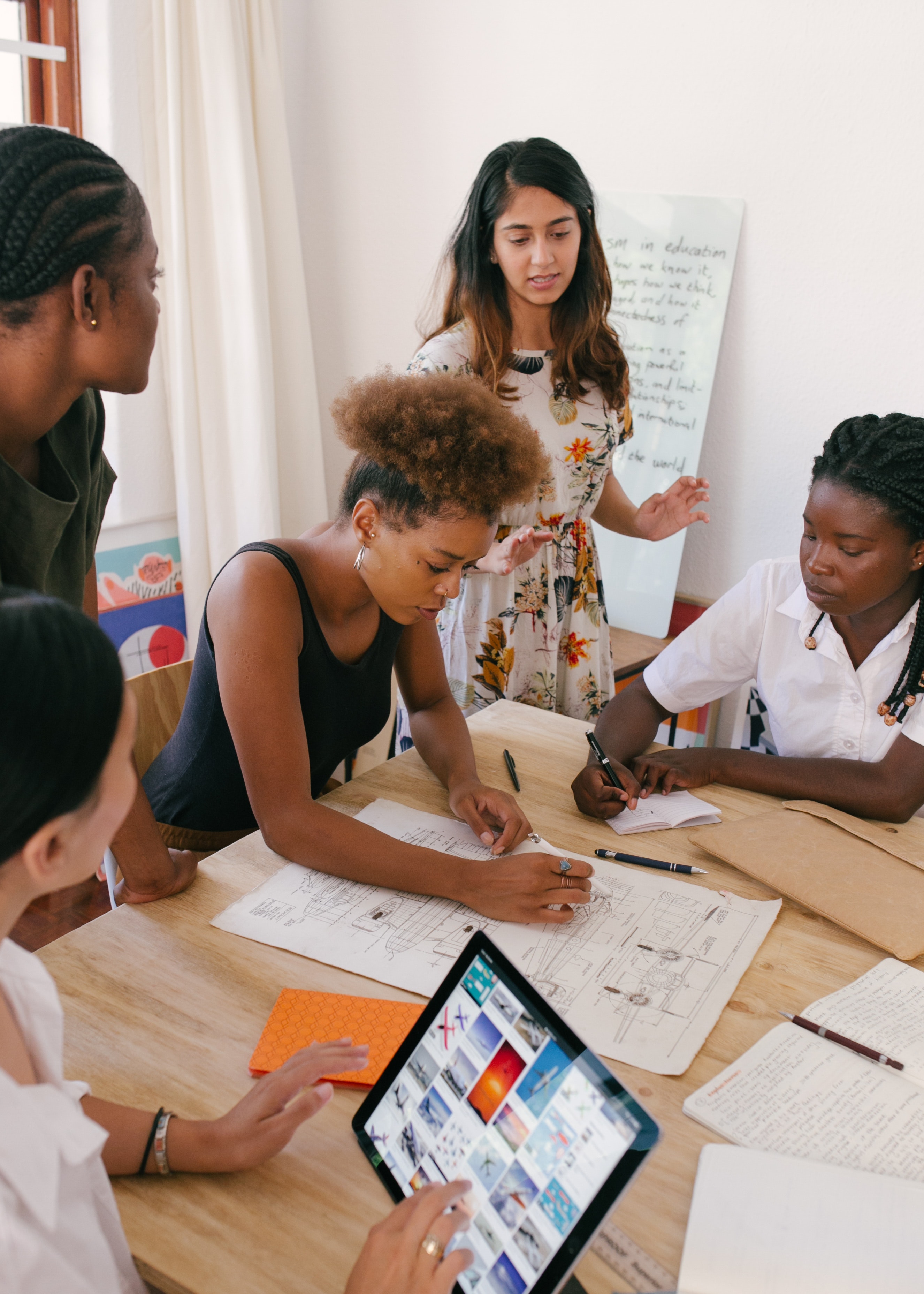
We need to allow students the time and space to solve problems. We cannot intervene every time they struggle to find the answer right away. Constant intervention hinders critical thinking and decision-making skills.
Make sure to leave some room for students to figure out solutions. Keep safe proximity so students have the comfort to know you are there if they cannot find a solution, but resist the urge to jump in as soon as you see them struggling.
Learn More: Brookings
5. Plan a Road Trip

Engage problem-solving skills within context while reinforcing math, research, geography, and communication skills, too! Students can plan a road trip from start to finish in small groups. As an added bonus, you can let students travel virtually to the places they planned for their trip using Google Earth.
If time allows, they can even take screenshots and stage selfies for a presentation to share their trip with the class! This is a really great cross-curricular activity for the digital classroom, too!
6. Escape the Room
Escape rooms were made for problem-solving, so what better way to build these skills for students in an exciting way! Create different challenge activities surrounding a variety of subjects and skills to reinforce while lettings students put problem-solving to use finding practical solutions to escape the room!
Divide kids into teams and get on this engaging problem-solving activity!
7. Teach Explicit Strategies for Reflection

Students can build analytical skills by reflecting on their problem-solving process. Teach explicit skills to help students recognize and reflect on how they solve problems to reinforce future use and strengthen overall critical thinking abilities. Check out how Ellie from Cognitive Cardio made it work even in the time constraints of middle school schedules!
Learn More: Cognitive Cardio With MSMM
8. Daily Practice
Give students short, interesting, and challenging problems to solve during the morning and afternoon transition times. Daily practice solving challenges is important for cognitive development and reinforces academic skills! You can find tons of daily challenges online or create your own.
9. Build Something
Let students work together in teams to build something from simple building materials. Increase the challenge by limiting resources or requiring students to pick their own resources for building blocks from a variety of random items. You can check out the marshmallow toothpick tower-building activity!
Learn more: Wow Sci
10. Blind Drawing Partners
Students can work in partner pairs or small groups to develop a vast array of abilities through this problem-solving activity. Blind team-building activities are excellent, low-prep ways to engage students' critical thinking and communication!
There are different ways you can implement this, but check out this video for an example of one application of the blind drawing game.
Learn more: Philip Barry
11. Laser Maze
Create a laser maze for students to get active in problem-solving. Create and implement different time durations to increase the challenge. Do not have lasers? No budget for lasers? Don't worry, red painter's tape will do the job!
Learn More: That Phillips Family
12. Shared Story Puzzles
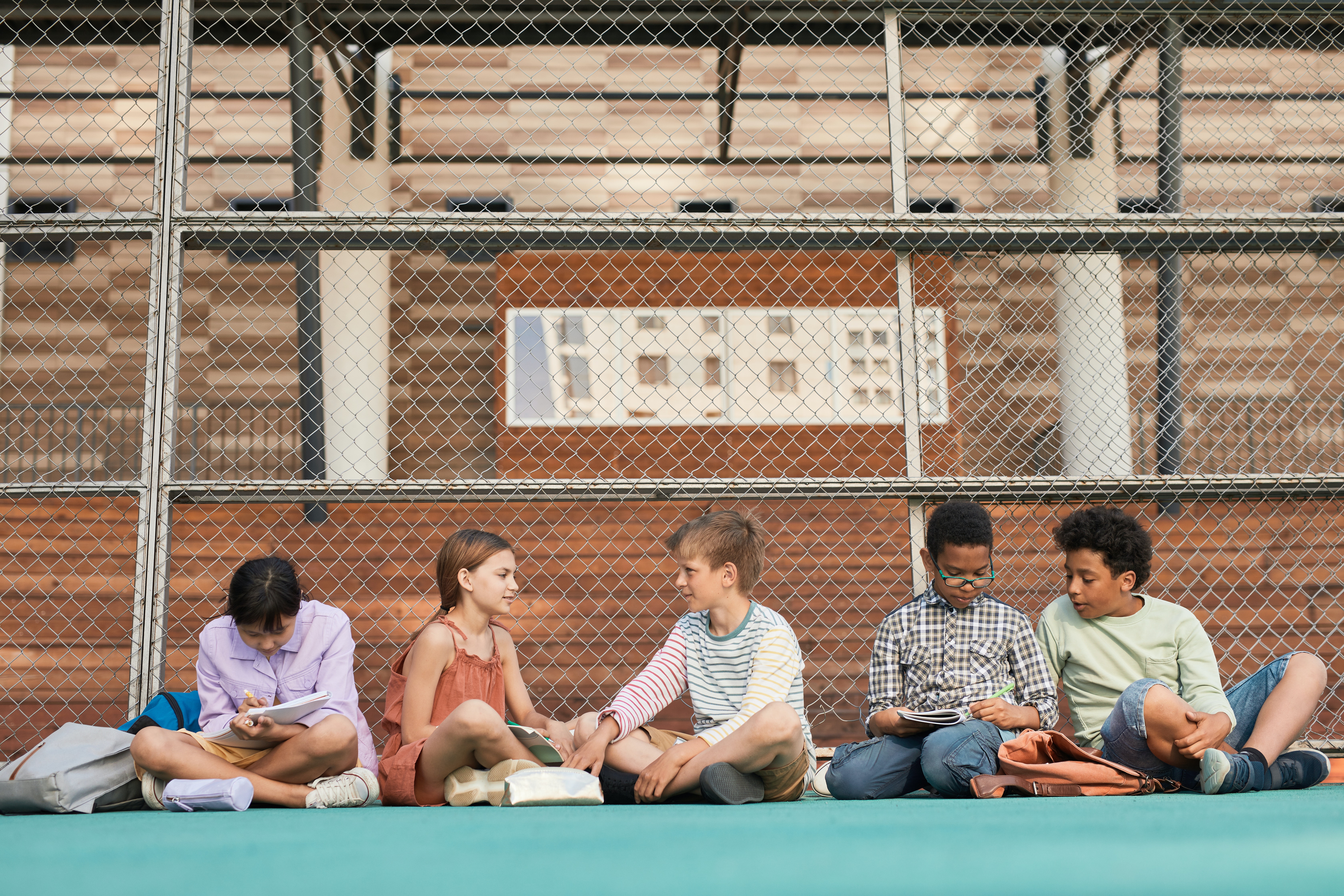
Creating story puzzles that force students to work in groups together to put together, add on, and create a cohesive story that is meaningful is another challenging task to engage in collaborative problem-solving.
Learn More: Secondary English Coffee Shop
13. Yarn Webs
This social-skill-building collaborative problem-solving activity is fun for any age. Organize students into teams then let them choose a color of yarn, build a team web, and see who can navigate. There are so many ways this activity can be adapted, but you can watch a video of one interpretation here .
Learn More: KEYSAmeriCorps
14. Scavenger Hunt
Create a series of clues that students must solve to progress through the game. Working in groups can help build conflict resolution and social skills as well. Check out how to create scavenger hunts for the classroom in this video by Learning Life.
Learn more: Learning Life
15. Boom! Math!
An excellent way to build advanced problem-solving skills, as well as mathematical analysis, is to create math Boom Cards with word problems like these from Math in the Middle. Boom cards are a great activity for students to practice and build skills!
Learn more: Boom Learning
16. Wheel of Solutions

Give students practice in exercising a number of different kinds of problem-solving skills by spinning and communicating a solution using the skills on which they land. You can make one in the classroom with a posterboard or create a digital wheel. Such a fun interactive resource! Use this great pre-made digital activity from Resource Haven on Boom Learning or create your own!
Learn More: Boom Learning
17. Collaborative Math
Another activity for team building that supports mathematical concept reinforcement is students working together to collaboratively solve math problems. Check out how Runde's Room made sure everyone is engaged in working on solving parts of the problem through the sticky-note collaborative math activity.
18. Get Mysterious
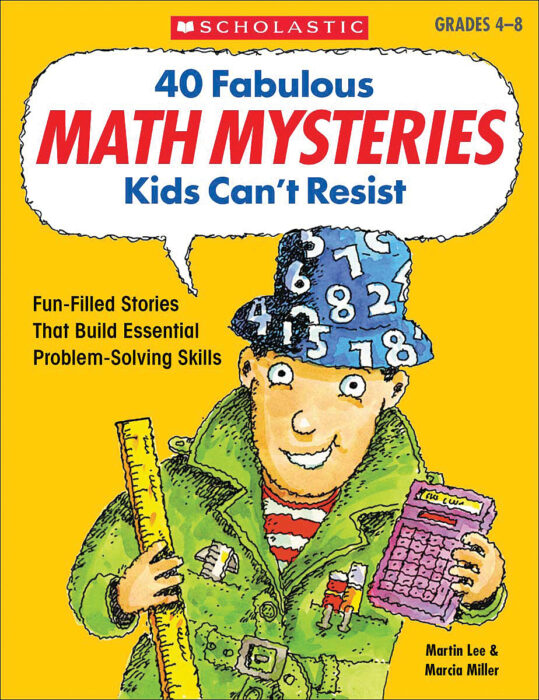
Math Mysteries are a fun activity that builds out-of-the-box thinking and creates an inquisitive environment. Problem-solving develops through the process of inquisition! You can create your own or use Lee and Miller's 40 Fabulous Math Mysteries Kid's Can't Resist Scholastic book found here.
19. Logic Puzzles and Games
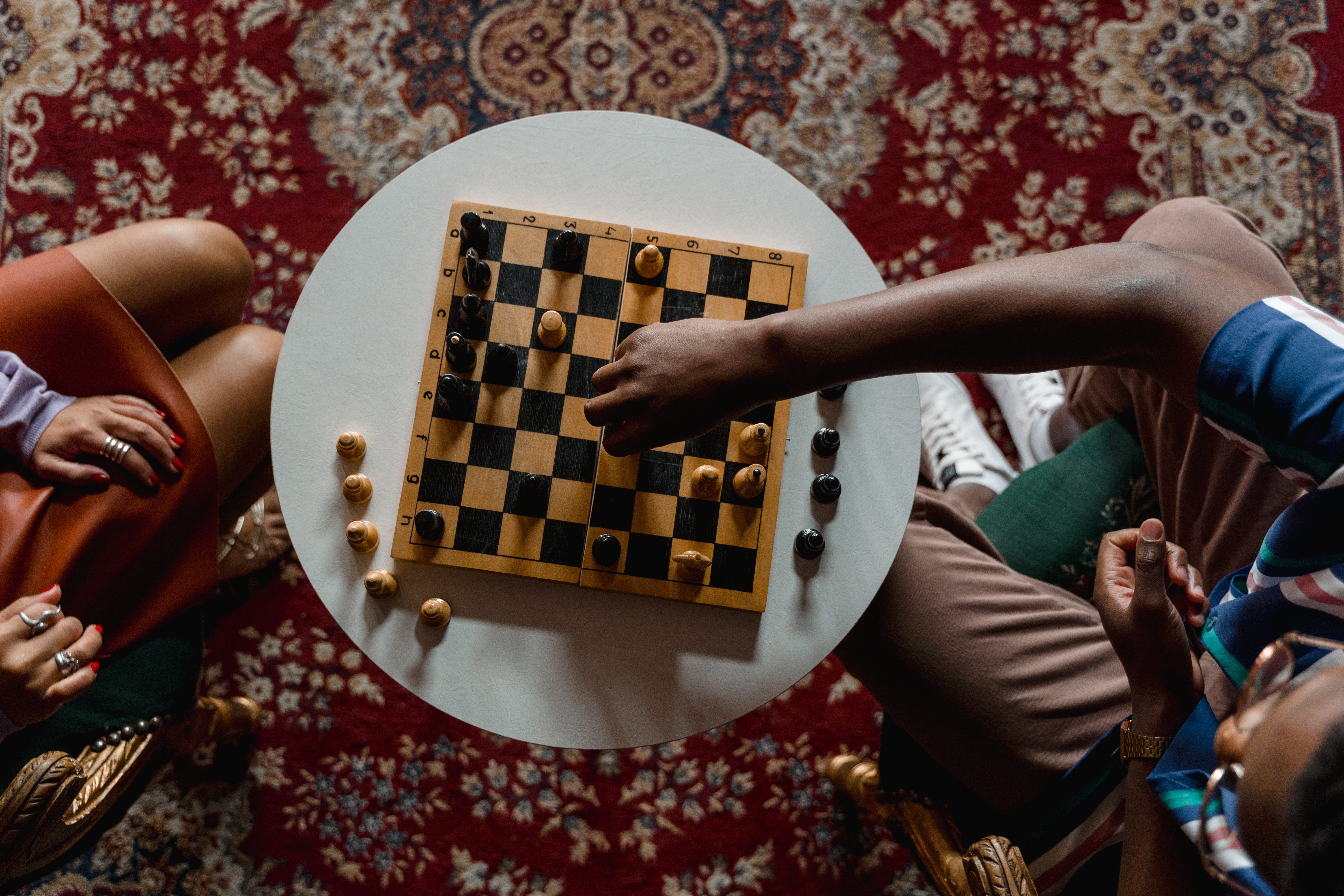
In addition to logic-building games like Chess, you can provide logic puzzles for morning and afternoon transitions, during downtime, or for early finishers. Logic puzzles help students think critically. You can make your own or get some prefabricated resources like the ones found in this book by Chris King .
Learn More: Brainzilla
20. Lead Number Talks
Number talks are important to building problem-solving. Number talks allow students to build on one another in a collaborative way, discuss how they have solved problems before, consider how those solutions may be applicable to new skills they are about to learn, and build depth in math concepts.
So instead of getting quiet, get them talking!
Learn More: North Dakota Teaching Kayla Durkin

IMAGES
COMMENTS
Speech-Language Pathologists (SLPs) are only able to see students/clients 30-60 mins (or less) per week. This is not enough time or practice for someone to handle Problem solving scenarios. Every day that your loved one goes without practice it becomes more difficult to help them. SEE ALSO: The Best Books for Speech Therapy Practice
Aug 9, 2023 · Problem-solving scenarios offer a combination of various situations that test the thinking skills and growth mindset of high school students. The below-mentioned scenarios are perfect for implementing problem-solving skills simply by allowing open discussions and contributions by students. 1. Uninvited Guests
Sep 30, 2024 · Prodigy is a game-based learning platform that takes your students on an online fantasy adventure while they answer standards-aligned math questions. It’s engaging and effective at teaching necessary skills. Prodigy's free teacher tools help you differentiate learning, send assessments in-game and even collect student insights!
Feb 11, 2024 · Real-World Problem Simulation: Environmental Crisis” is one of the most engaging problem solving activities for high school students, designed as a group problem solving challenge that immerses students in the complexities of environmental issues, encouraging collaboration and critical thinking to find innovative solutions.
Aug 7, 2023 · 1. Develops Problem-Solving Skills. Students are sure to come across everyday problems and issues in their academic journey or personal life. While some students may develop stress, others might ignore it. However, the essence of critical thinking helps students solve these issues with intelligence.
Oct 31, 2024 · Enjoy Problem-Solving Activities For Kids. And there you have it: problem-solving activities for students from elementary through high school age. Of course, there are many more ways to build critical-thinking abilities like problem-solving. For more ideas, check this list of awesome after-school enrichment activities.
Apr 23, 2024 · Confidence building: Through regular practice, students gain confidence in their problem solving skills, equipping them to address challenges across a wide variety of subject areas and real-life scenarios. “The goal in teaching problem-solving is for it to become second nature, and for students to routinely express their curiosity, explore ...
May 30, 2023 · Problem-solving activities for kids: Explore 24 fun problem-solving games and activities, and learn effective tips and strategies to teach kids problem-solving skills. If you want to explore problem-solving strategies more in-depth, you can also grab our workbook “Problem-Solving for Kids” (printable resource).
Fun Problem-Solving Scenarios for Elementary Students. Now, let’s explore some fun problem-solving scenarios that you can use with your elementary students. These scenarios are designed to be engaging and interactive, allowing students to apply their problem-solving skills in a practical and enjoyable way. Scenario 1: The Lost Toy
Nov 20, 2023 · Problem-solving skills are important to the building of critical thinking, which in turn strengthens student executive function. Good problem solvers can build stronger cognitive flexibility, a critical component of executive functioning. The teenage years are a crucial time for neuroplasticity, so it is a prime time for learning and developing important cognitive skills along with …